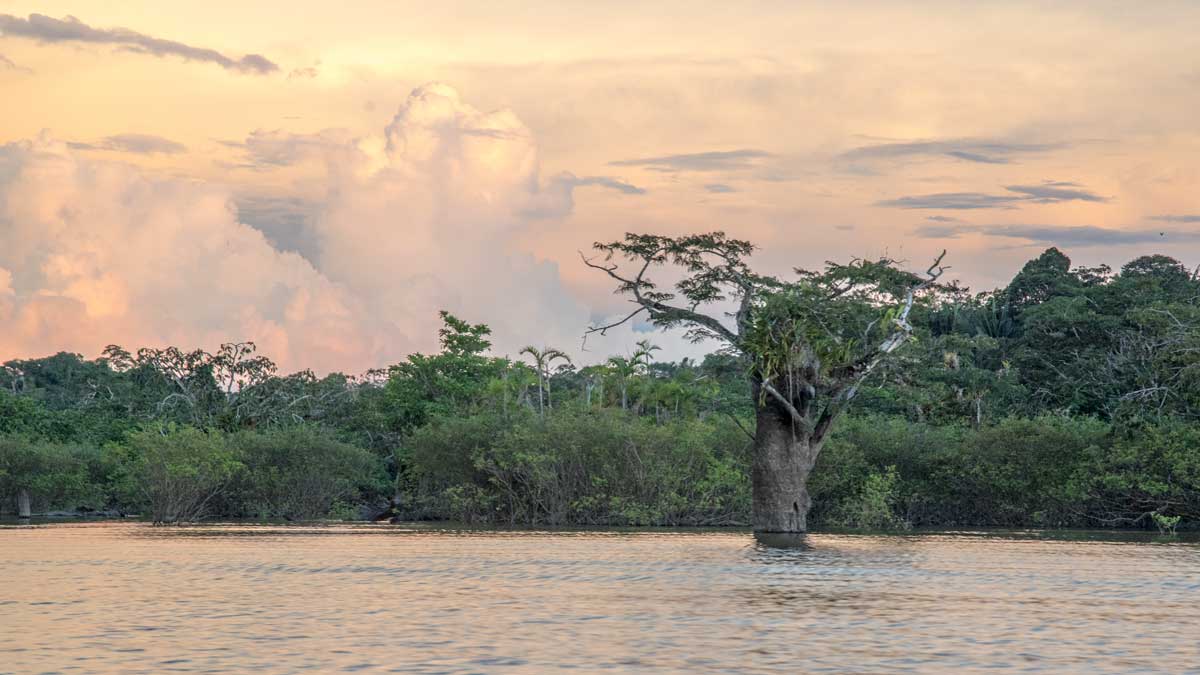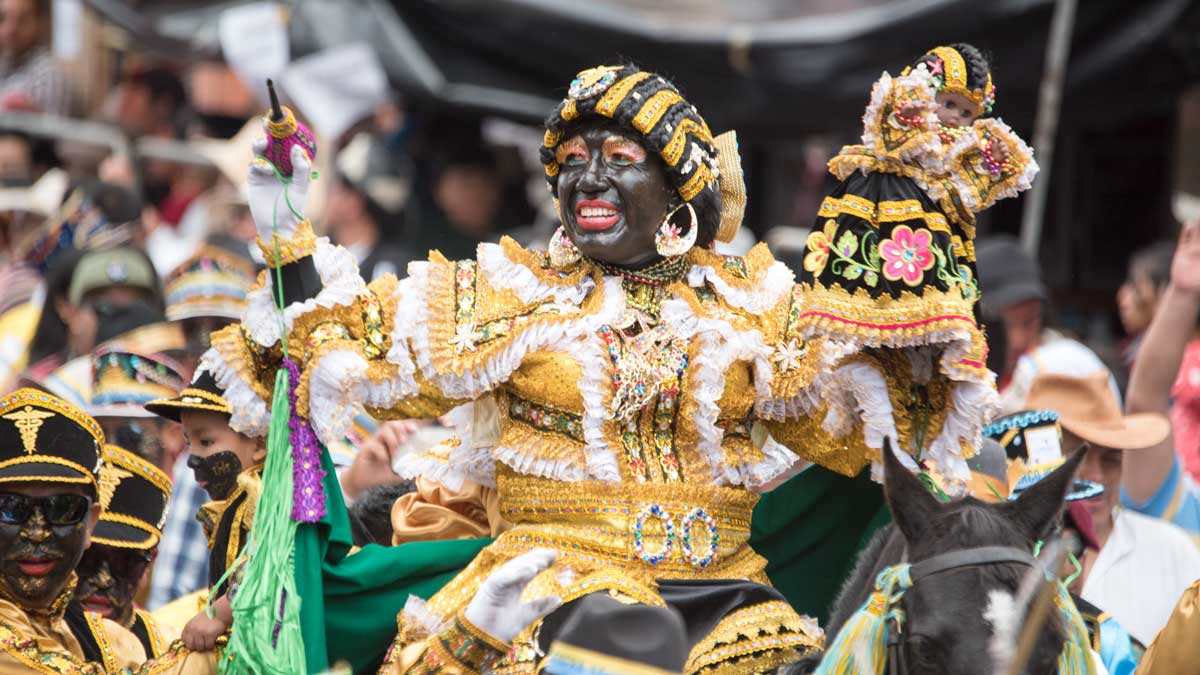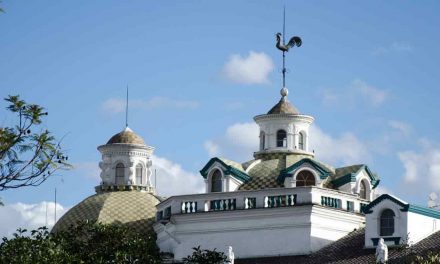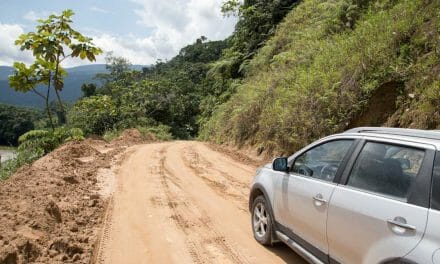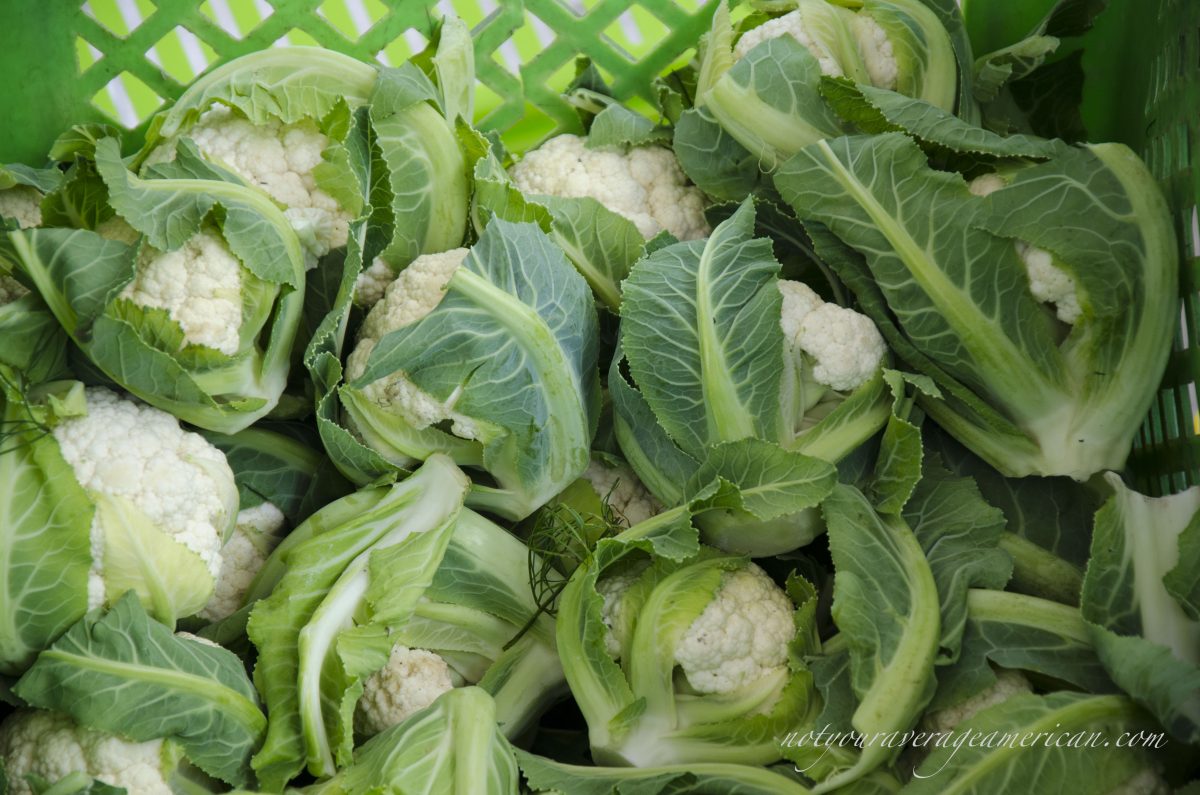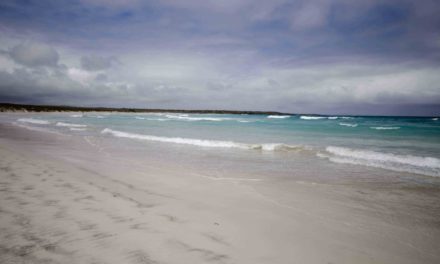As responsible travelers evolve, so do the stories we share.
This article is part of our living archive — trusted content we continue to care for.
First published on December 5, 2018 • Last updated on December 6, 2018.
Mama Negra: A Photo Essay: The Supporting Cast
Each year in November, the city of Latacunga, Ecuador celebrates Mama Negra, a figure of national fame. The festival and parade originated in 1742 when local residents turned to the Virgin of Merced to save them from a possible eruption of the nearby Cotopaxi Volcano. Of course, the original date of the festival coincides with the September Equinox. Spanish colonists wanted to integrate the indigenous festival Killa Raymi with Catholic themes. Nowadays, two festivals are held: a smaller, more indigenous festival in September and the larger city festival in November.
Today, the November parade can last hours with participants dancing and drinking the entire route. Along the way, important figures pass by, each with their own meaning and importance. Mama Negra arrives only after hundreds of others have danced past, many throwing sweets into the crowd, others offering shots of strong aguardiente, all dressed in brightly colored local costumes.
The following photo essay describes the supporting cast of characters. In our follow-up article, you can read about the main characters including the infamous Mama Negra herself.

The Supporting Cast of Mama Negra
There are both primary and secondary characters in the Mama Negra parade. The secondary characters make up the majority of the parade participants. They lead the procession, maintain the rhythm of forward momentum, fill the gaps in between the grander characters, and follow Mama Negra in the finale. Without these characters, the parade would be very small indeed.
LOs Priostes (The Hosts)
Los Priostes are the hosts of the parade. There is a main Prioste, the Capitan, described in our accompanying article about the primary characters. However, the parade is made up of many smaller associations such as church groups, political parties, and military organizations. Each of these groups is lead by a Prioste who has paid to fund his portion of the parade (and yes, they are almost always men). They most often carry a bastón with symbols that relate to their organization or that honor the Virgin of Mercedes.
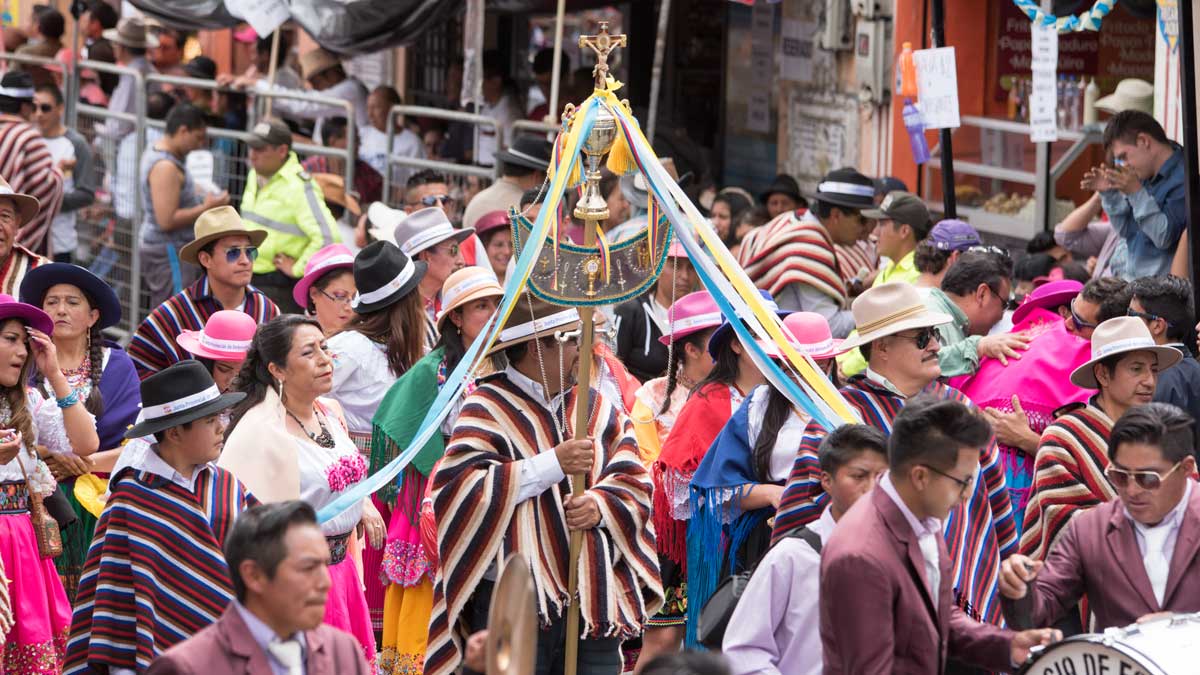
Las cholas “ofrenderas” y “veladoras”
Las Cholas Ofrenderas accompany the Prioste, tossing gifts into the crowd. These women carry baskets full of candy, sweets, and sometimes small keepsakes to remember Mama Negra like ceramic figures of the main characters. They throw these small gifts to attentive parade watchers. They especially focus on visitors from outside Latacunga. It’s the one time that it is better to stick out in the crowd!
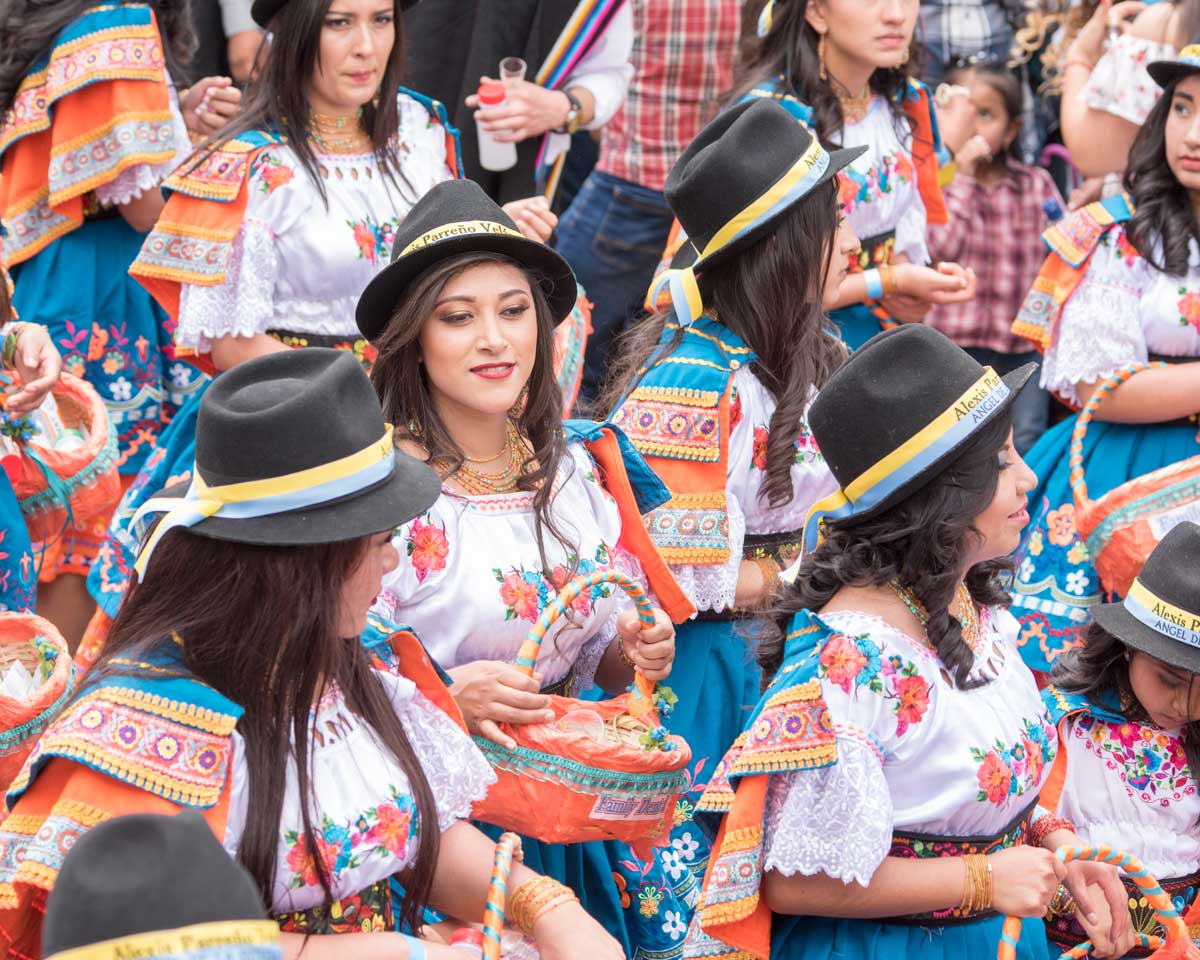
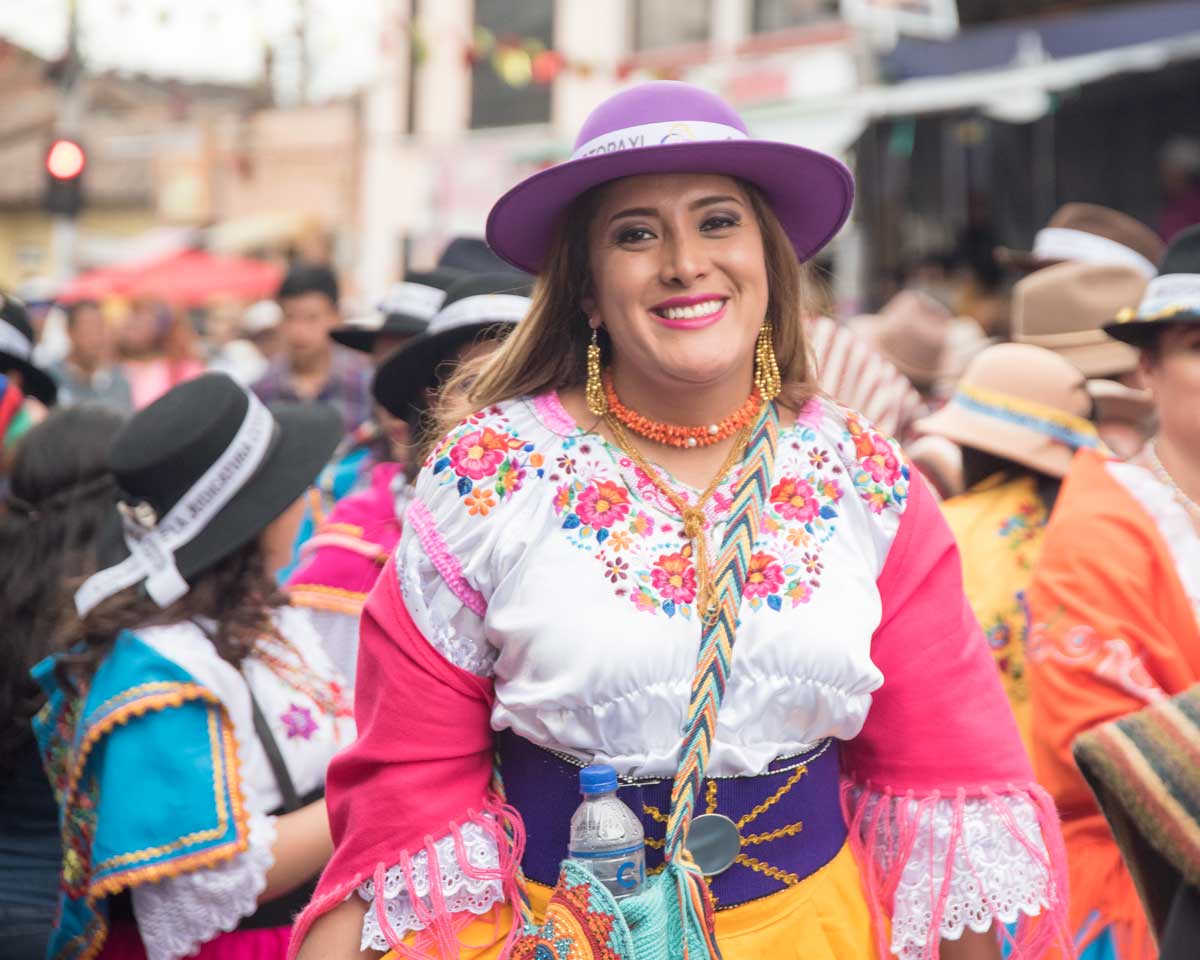
Las Yumbadas (The dancers)
Las Yumbadas are those people dancing traditional folkdances. Also called Los Yumbos, these groups are sometimes all male or all female but are often a mixture of both. The danacers are always dressed in bright colors, rarely stop dancing, and are accompanied by many of the other characters that follow below.
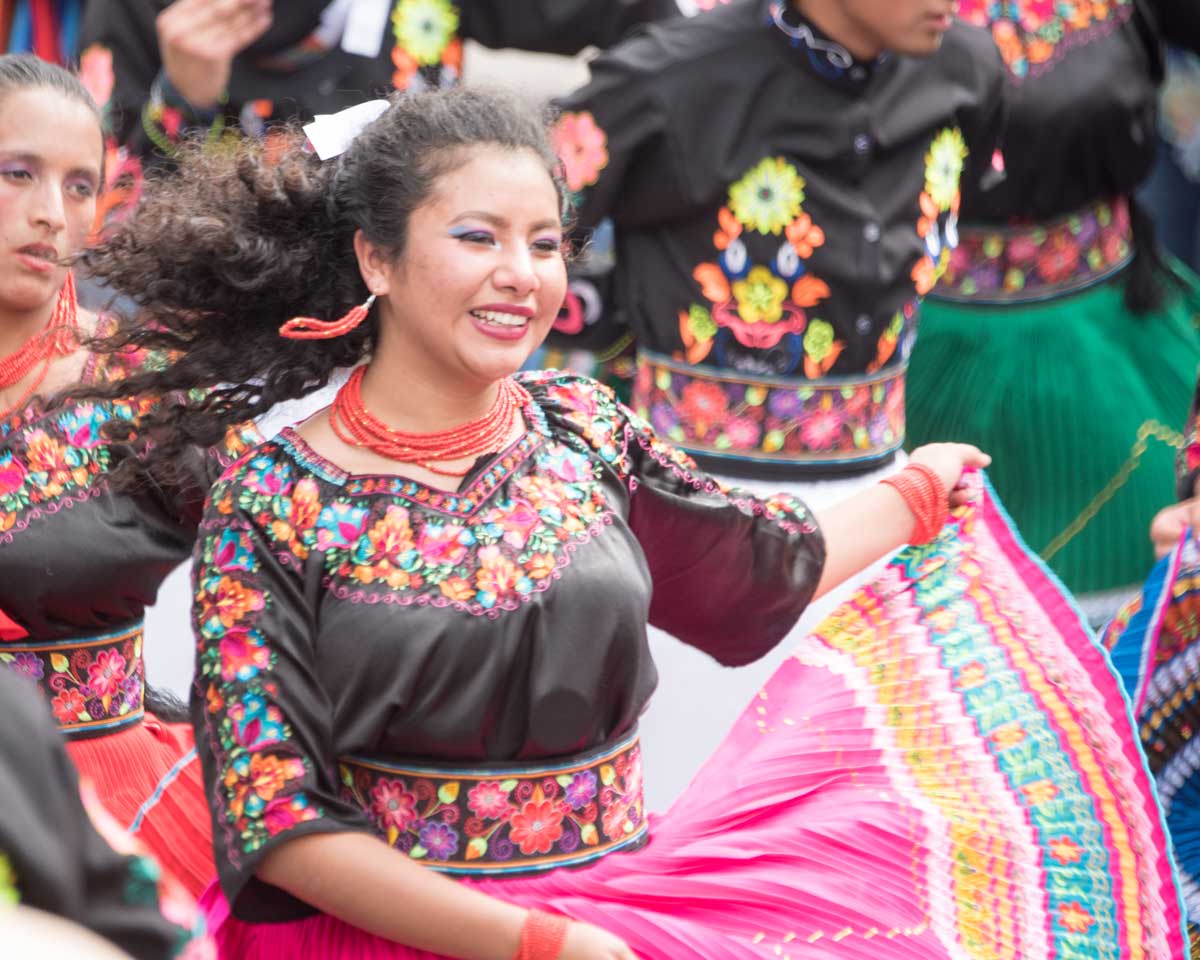
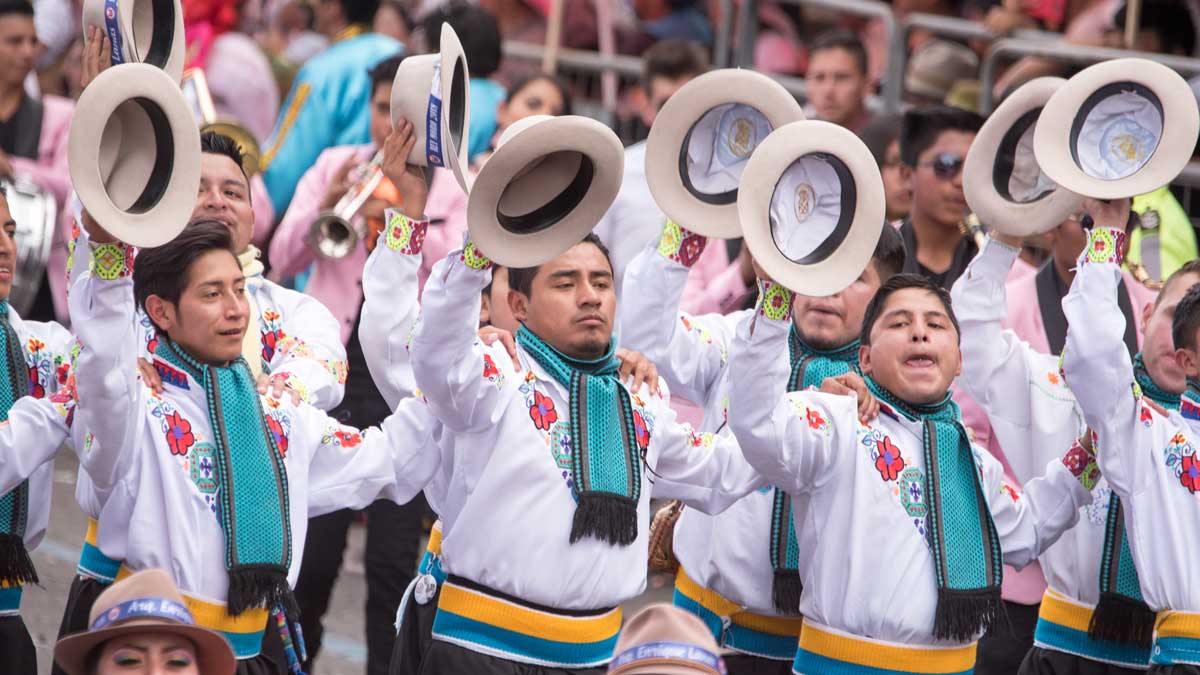
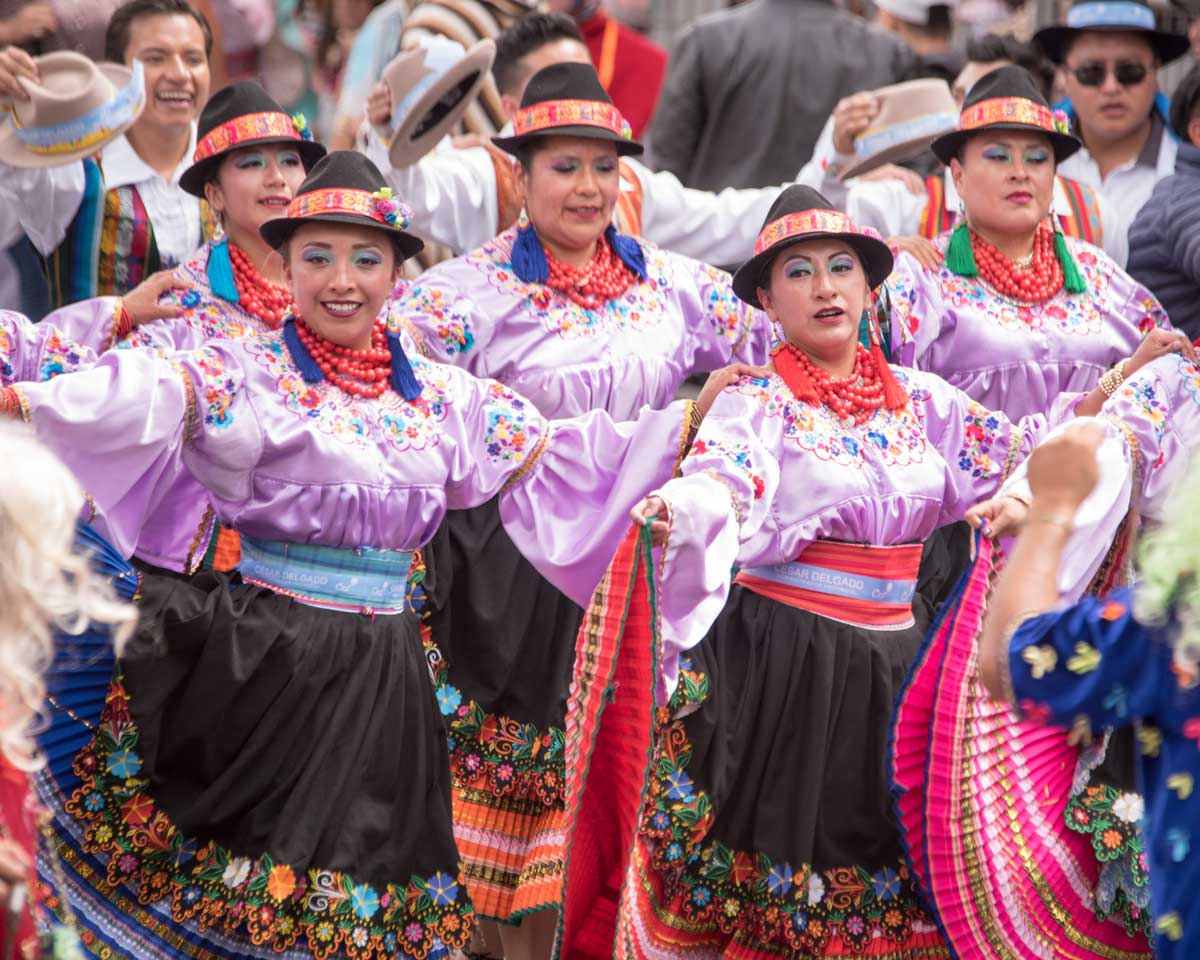
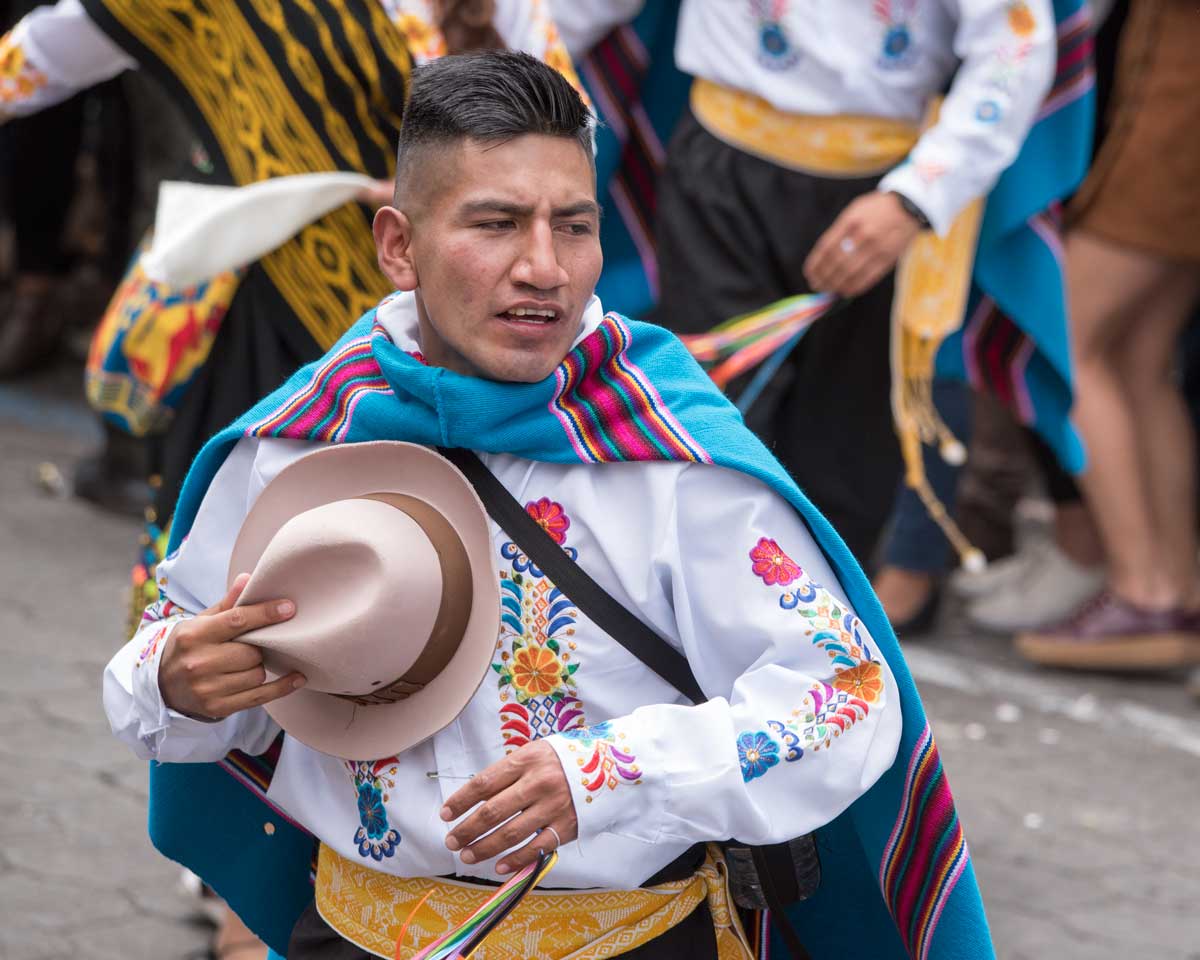
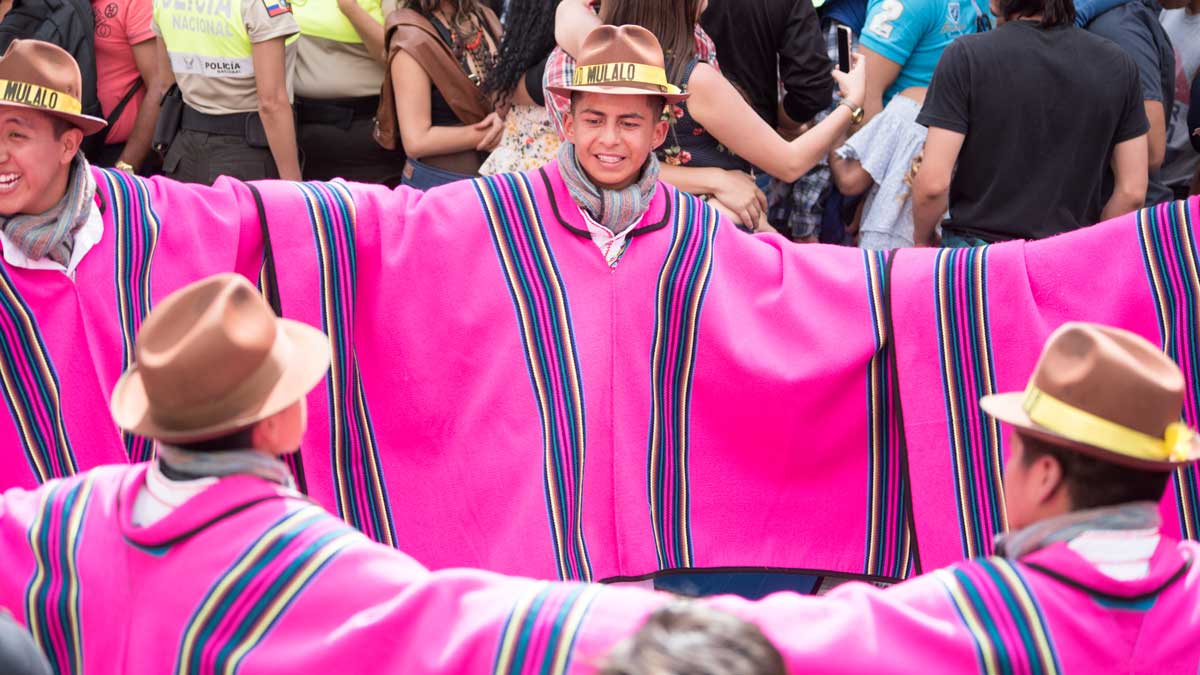
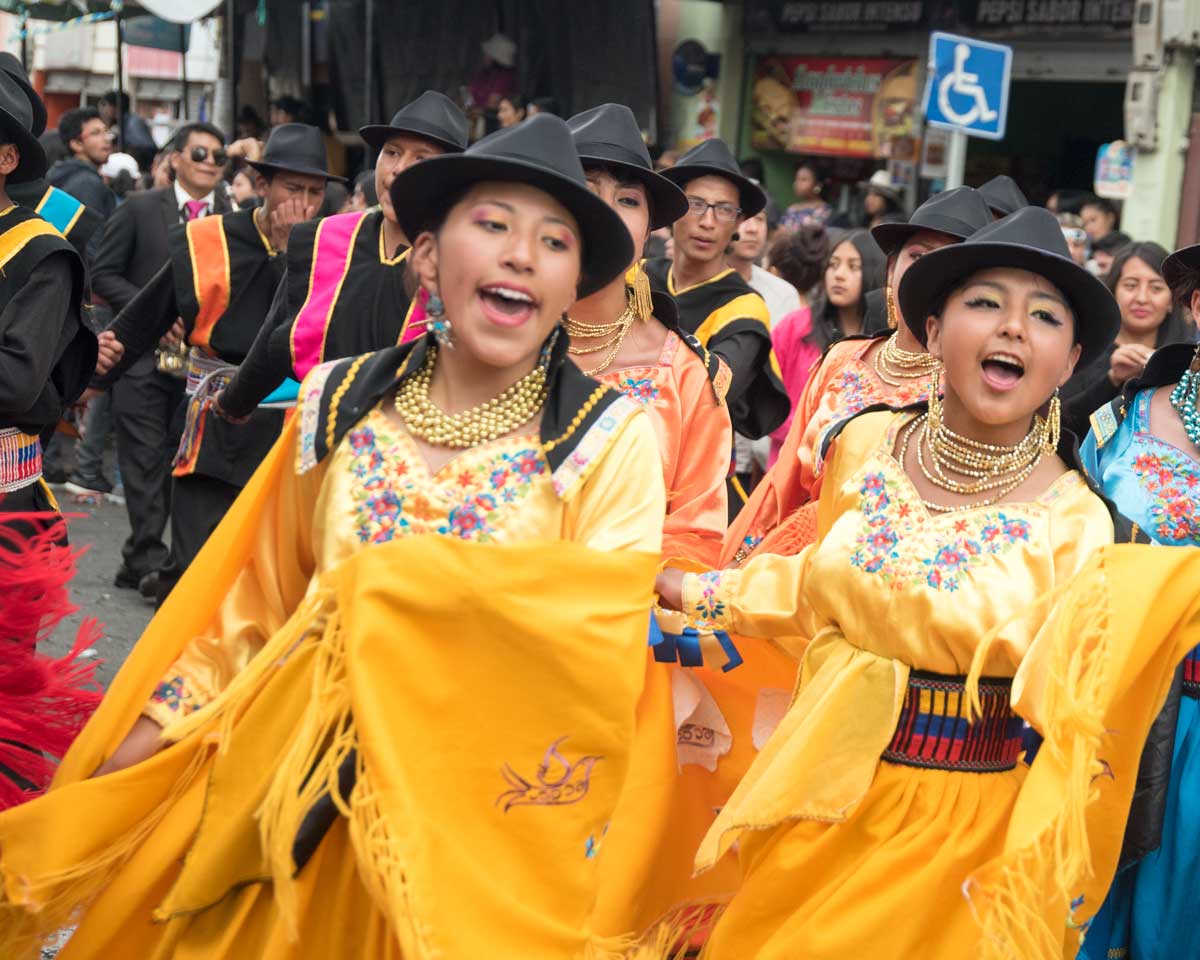
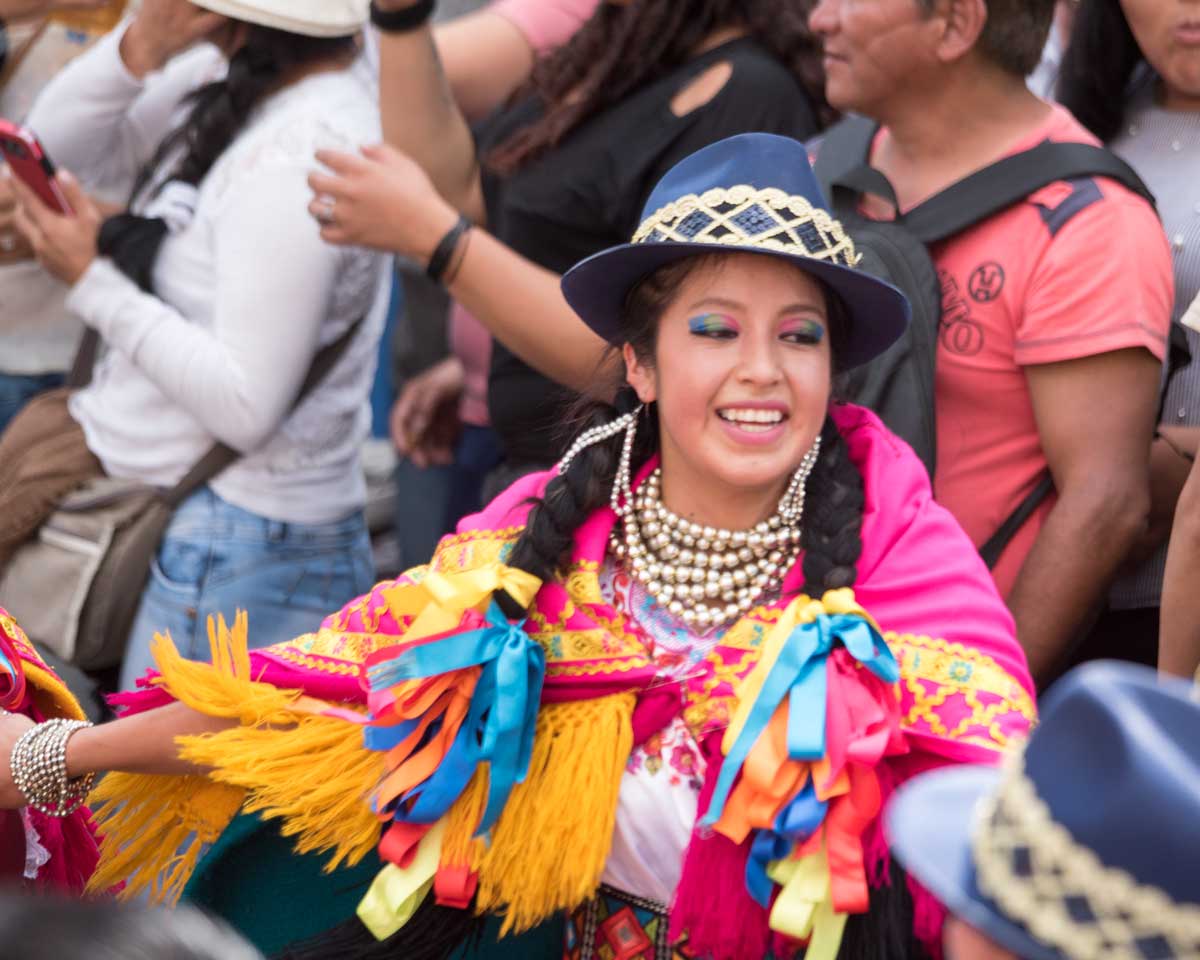
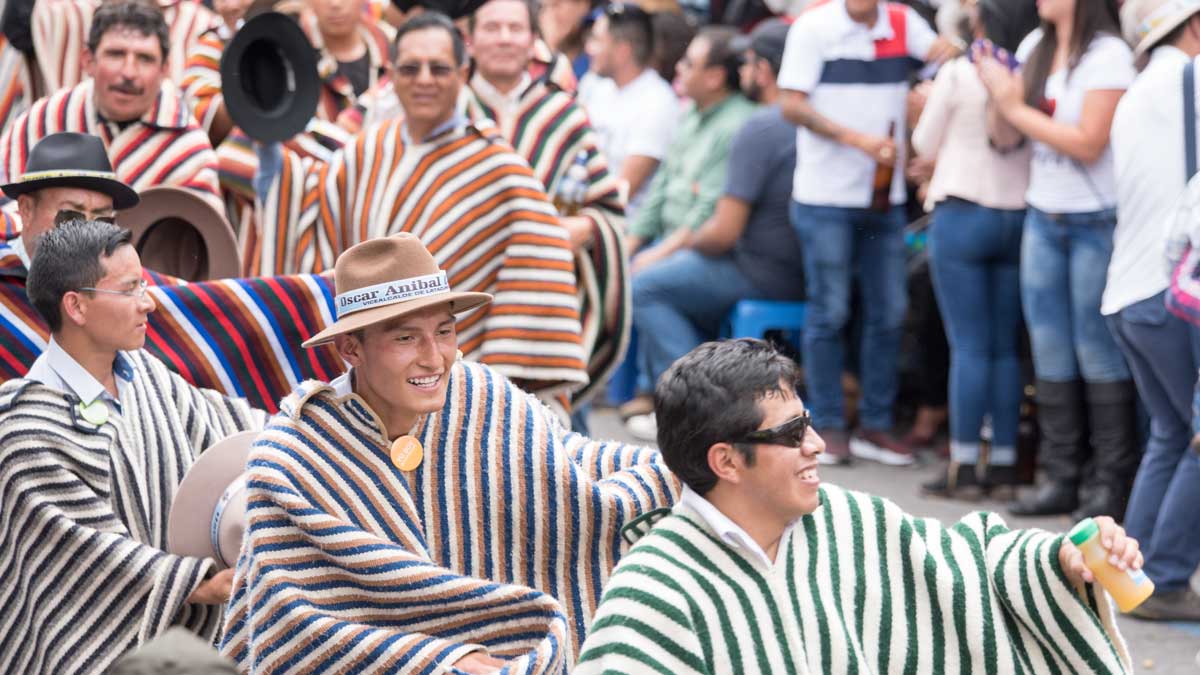
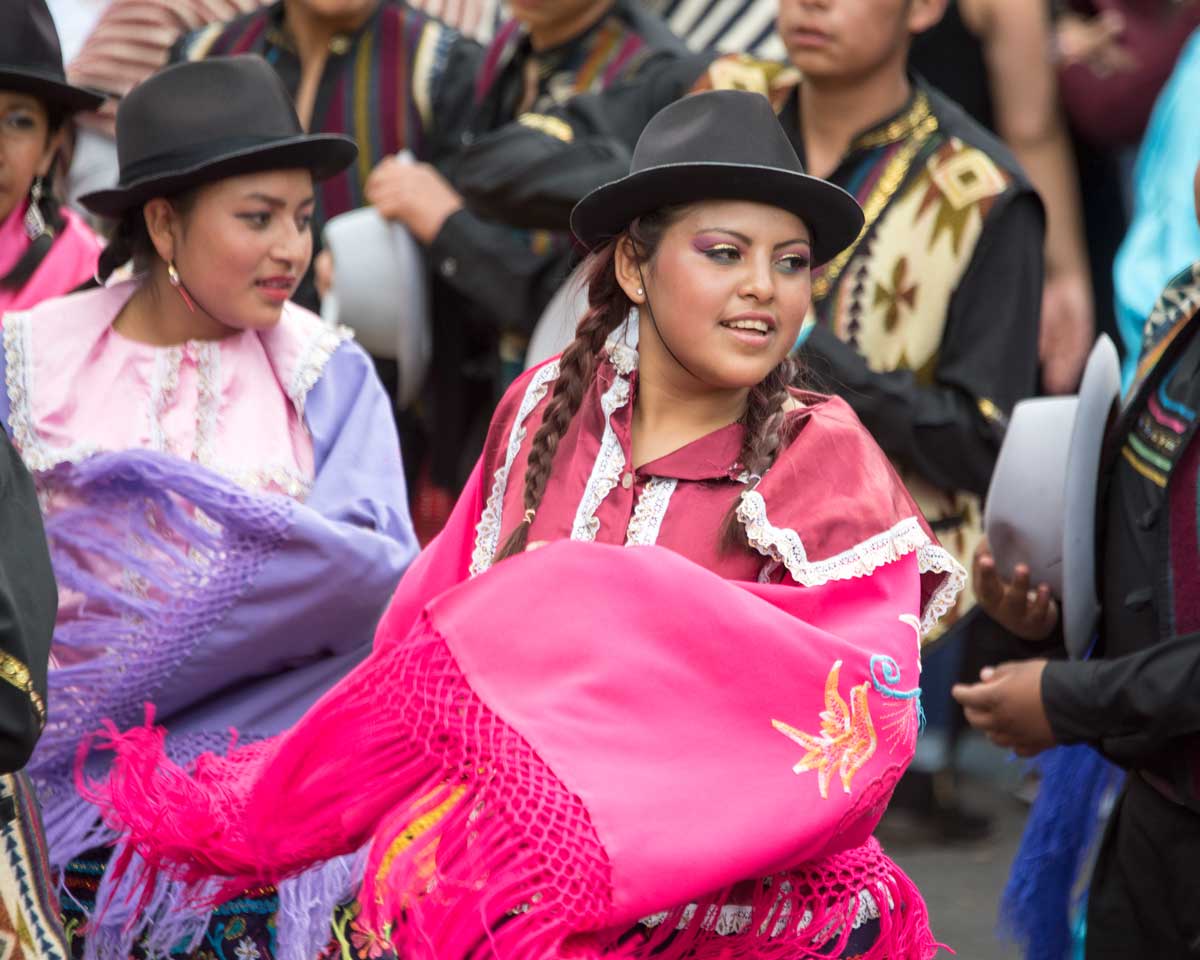
LAS CAMISONAS
Las Camisonas, also called Carishiunas, are men dressed as women. They are supposed to be the wives of the soldiers marching in the parade. Most have brightly painted lips, wear long, messy wigs, and provocatively move their skirts to show thighs and sometimes panties. The crowd often points and laughs at some of the more daring Camisonas. For the unaware standing along the parade route, be warned. Many Camisonas carry a small, colorful whip which they use on inattentive bystanders. Their job is to make sure the route is wide enough for the parade to pass.
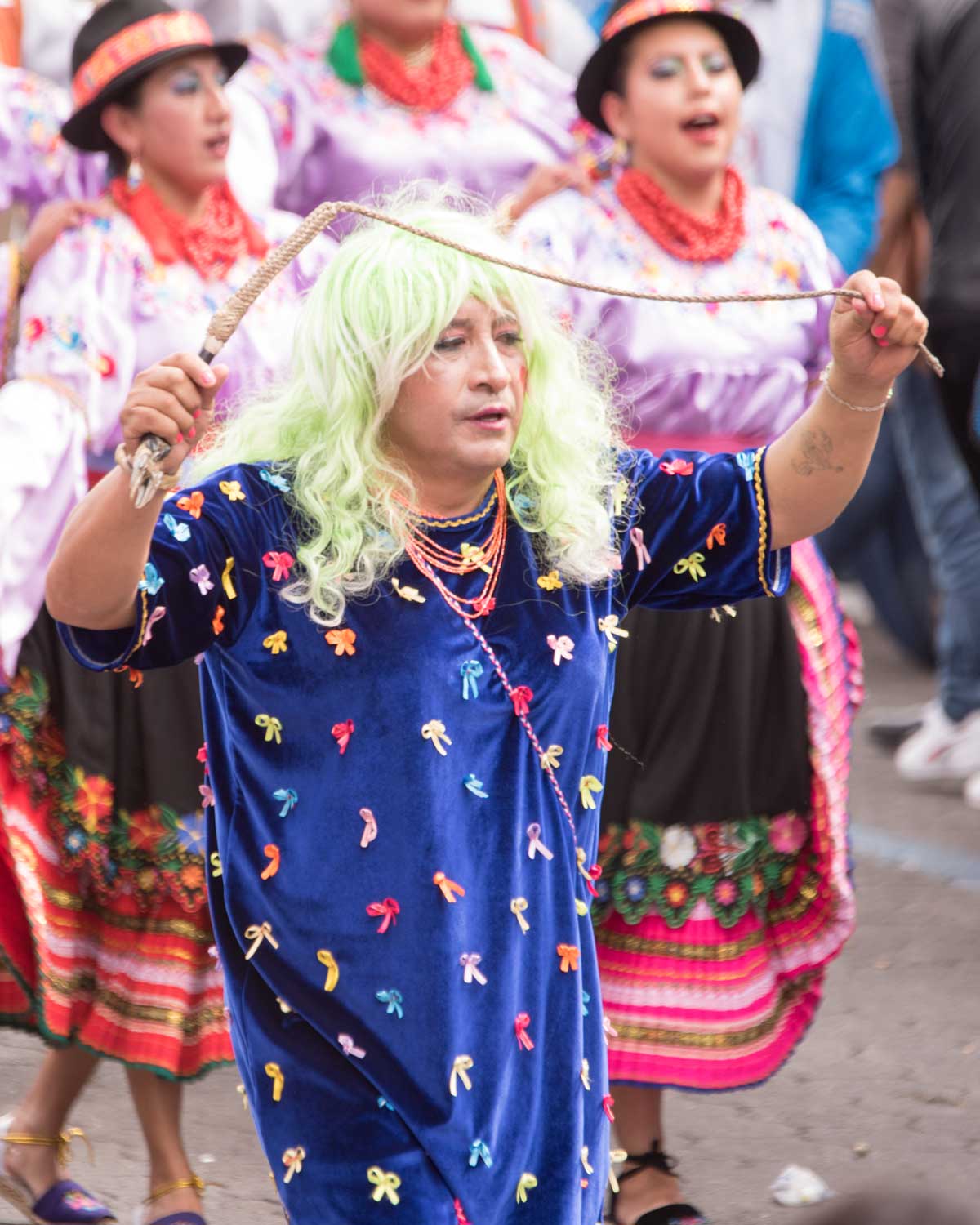
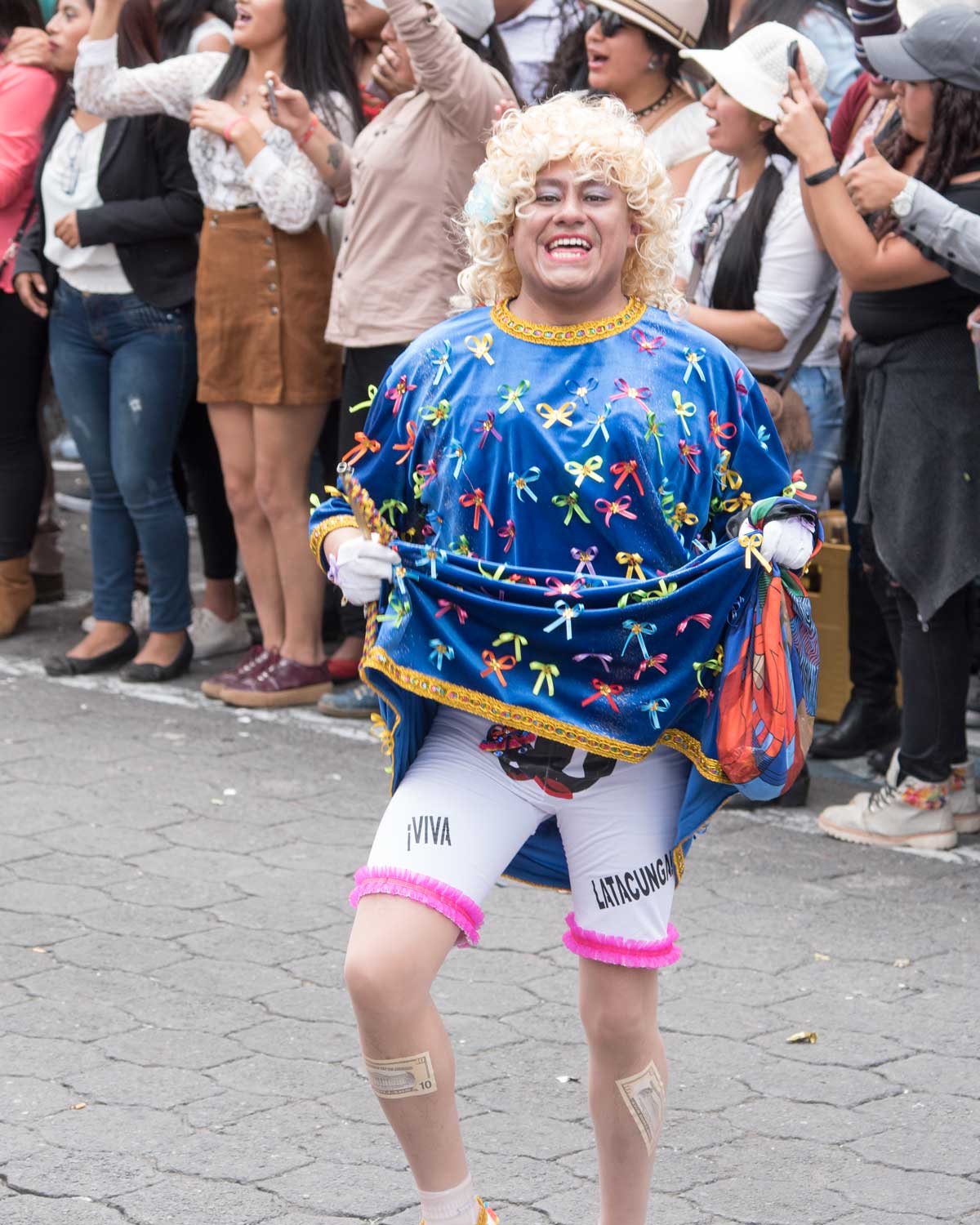
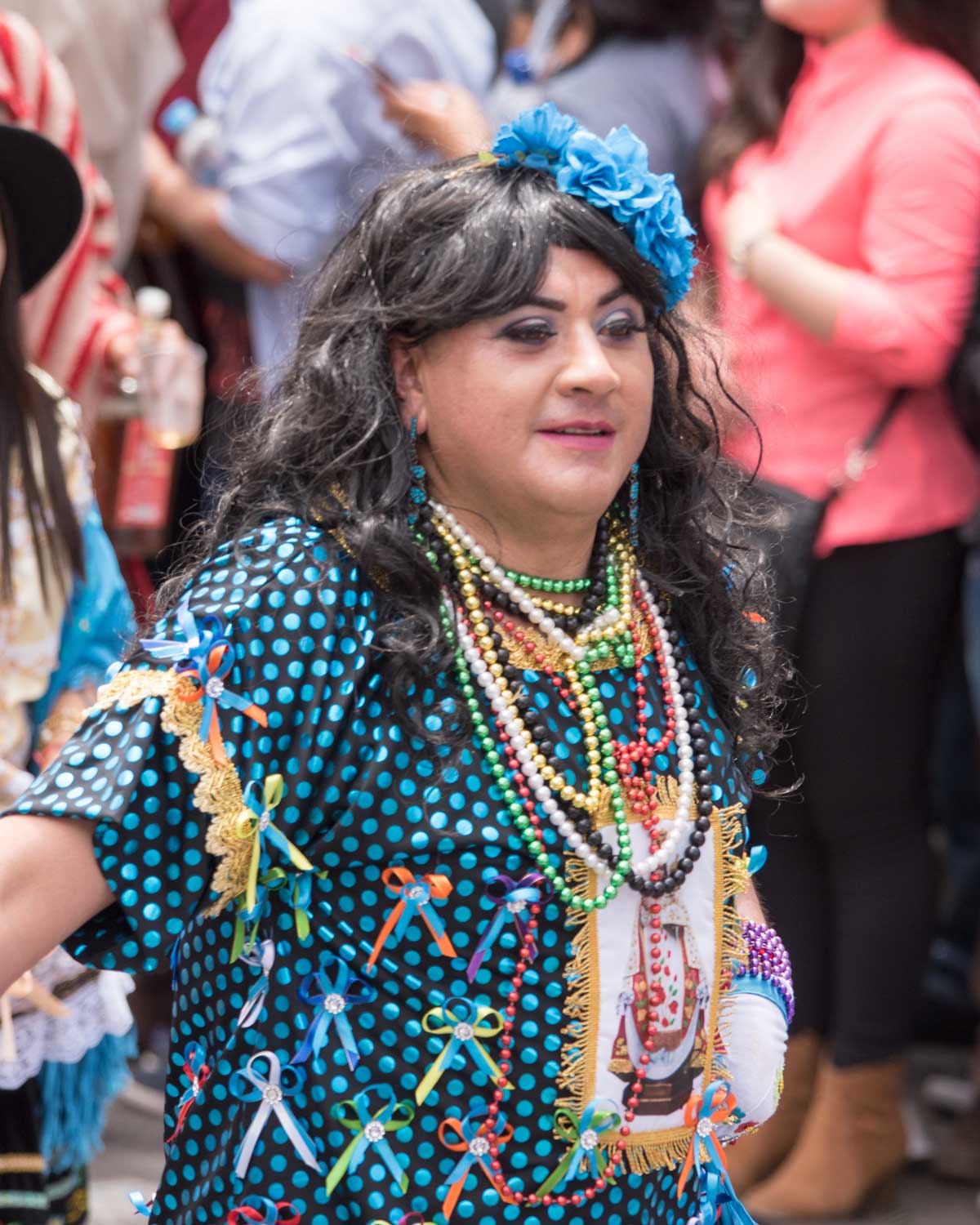
Los Loeros and Los Negro Loeros
Los Loeros praise the crowd while widely sharing shots of hard liquor, called tragitos. Traditionally, this liquor is made by the very person or group offering it to the crowd. Often organizations, like the Ecuadorian Army or the National Police, bring their own bottles branded with their organizational name.
Some Loeros are called Loeros Negros. They wear a half mask of black face paint, reinforcing their relationship to Mama Negra and to the slaves who once were forced to work in the mines near Latacunga.
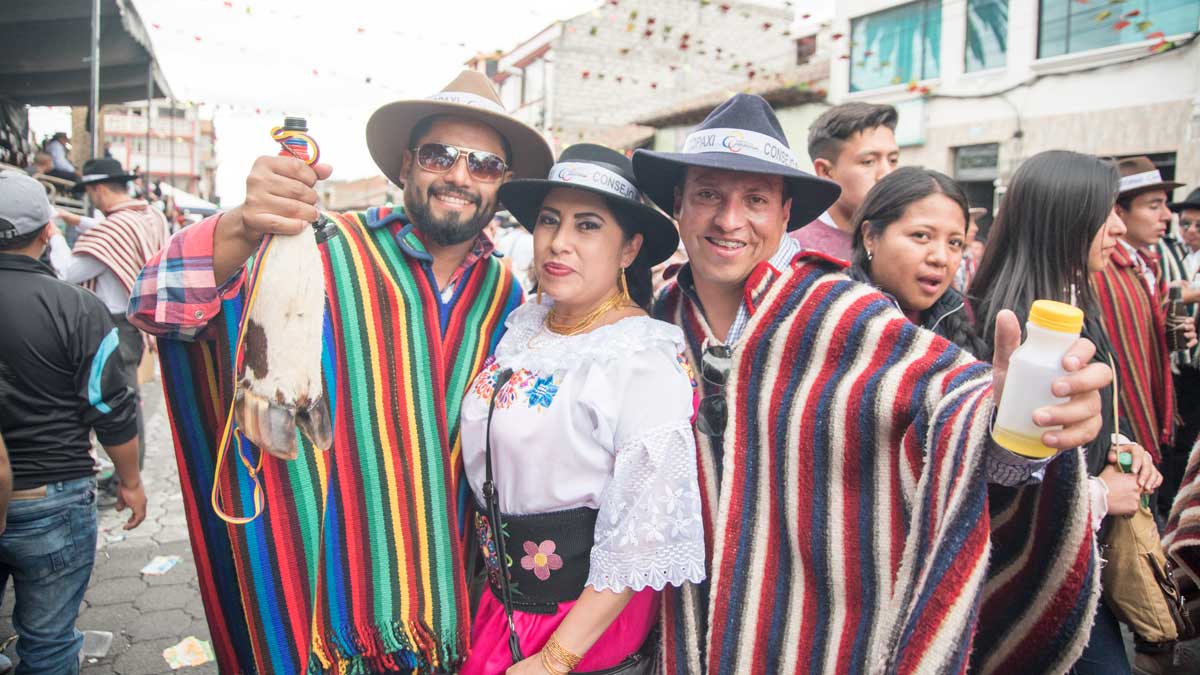
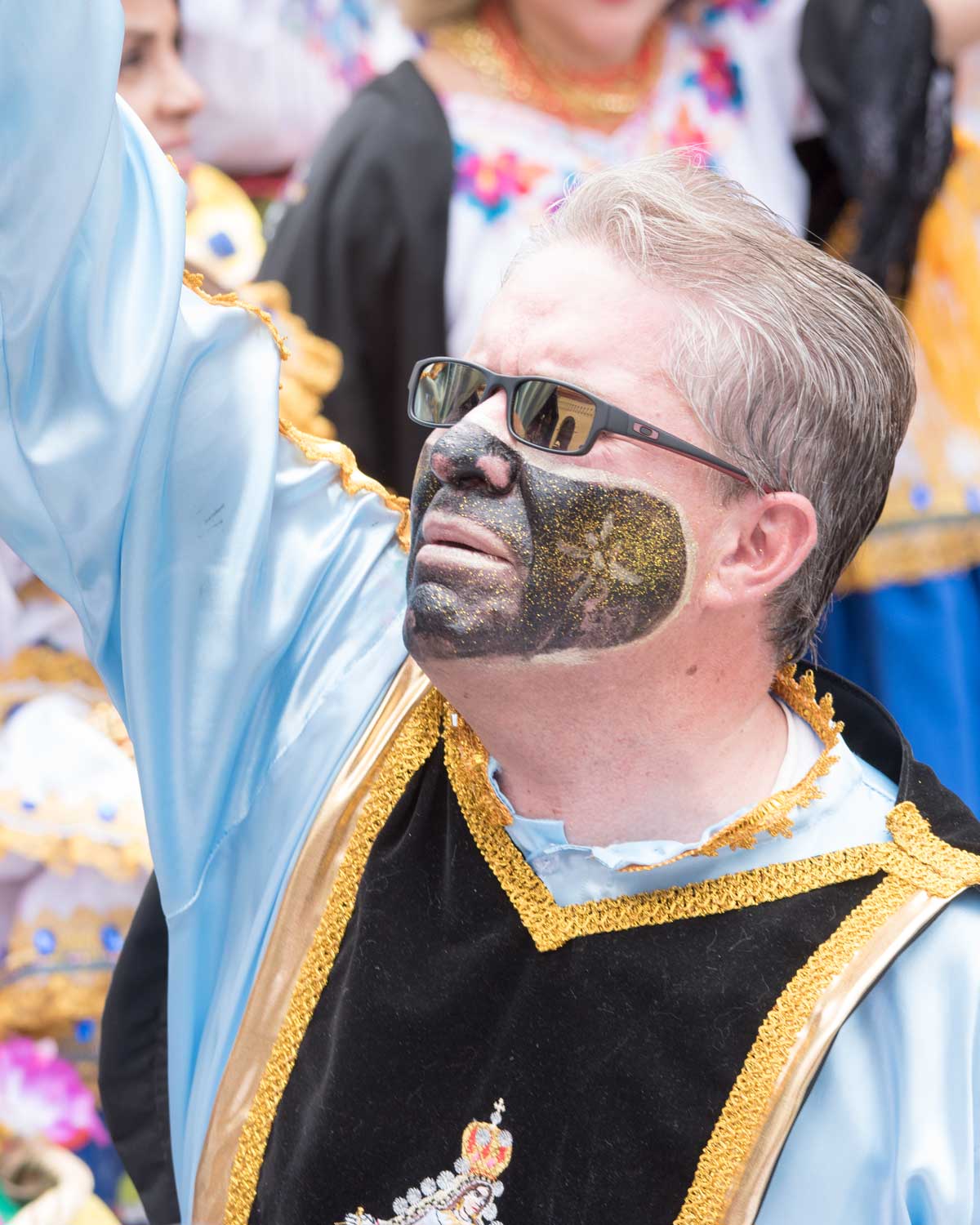
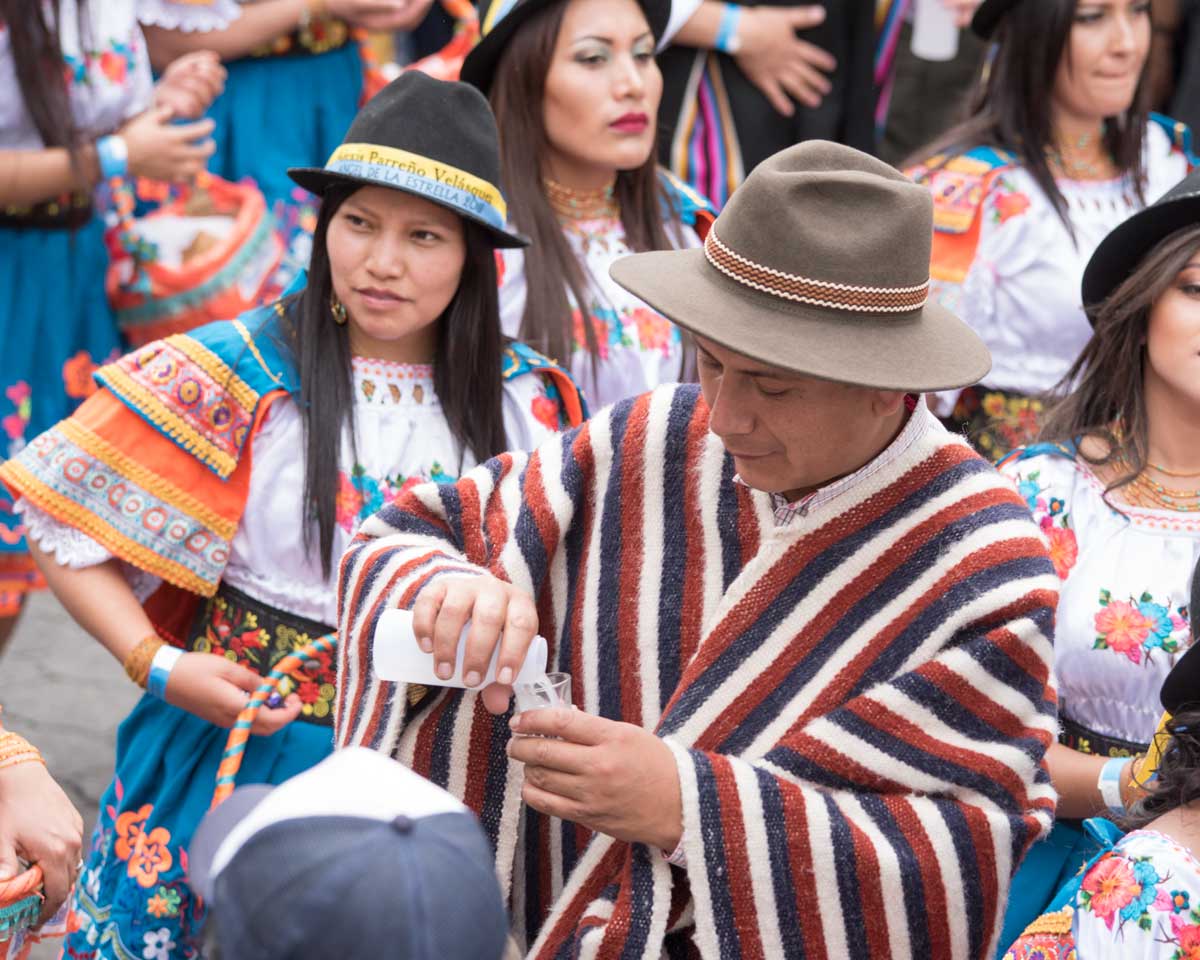
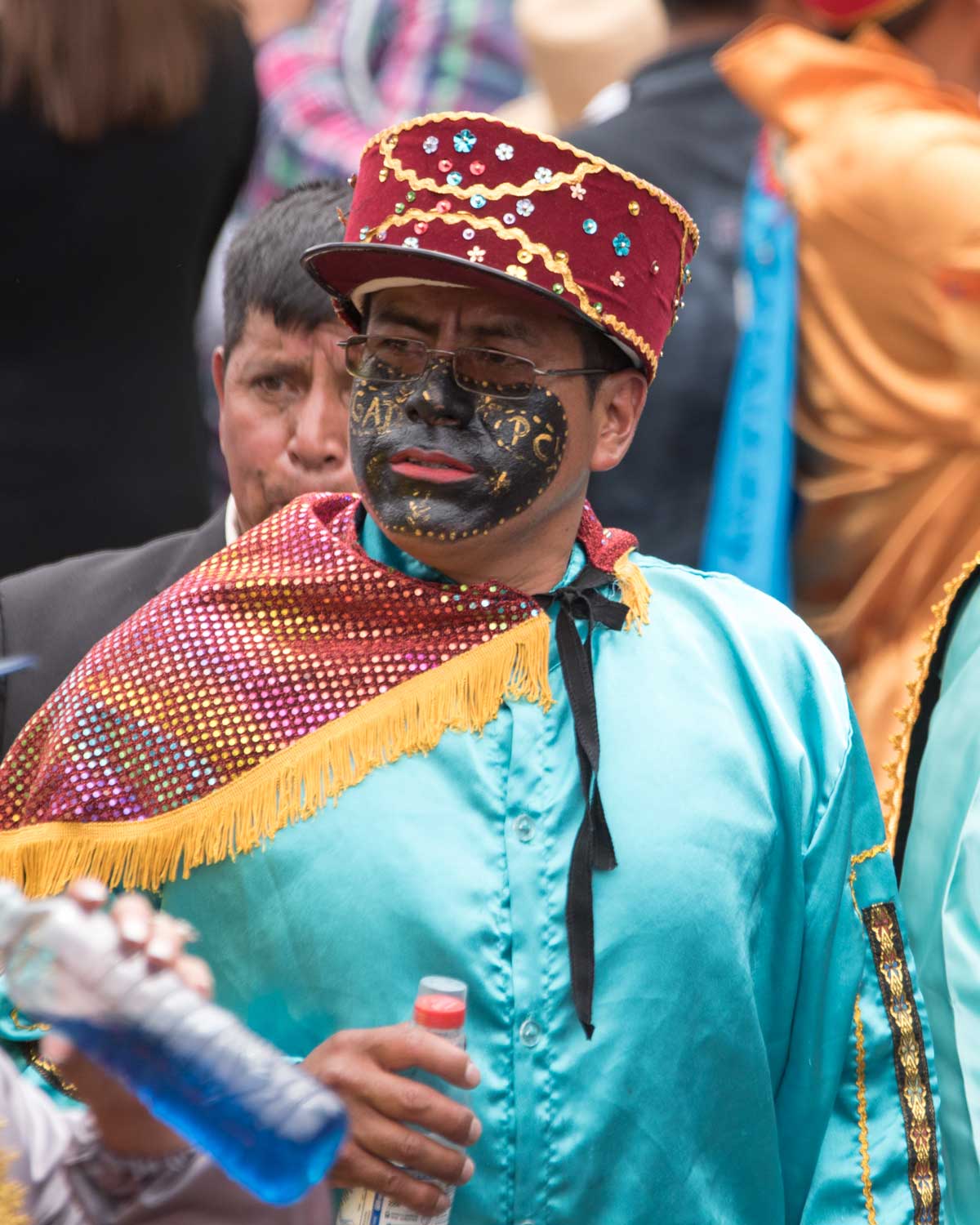
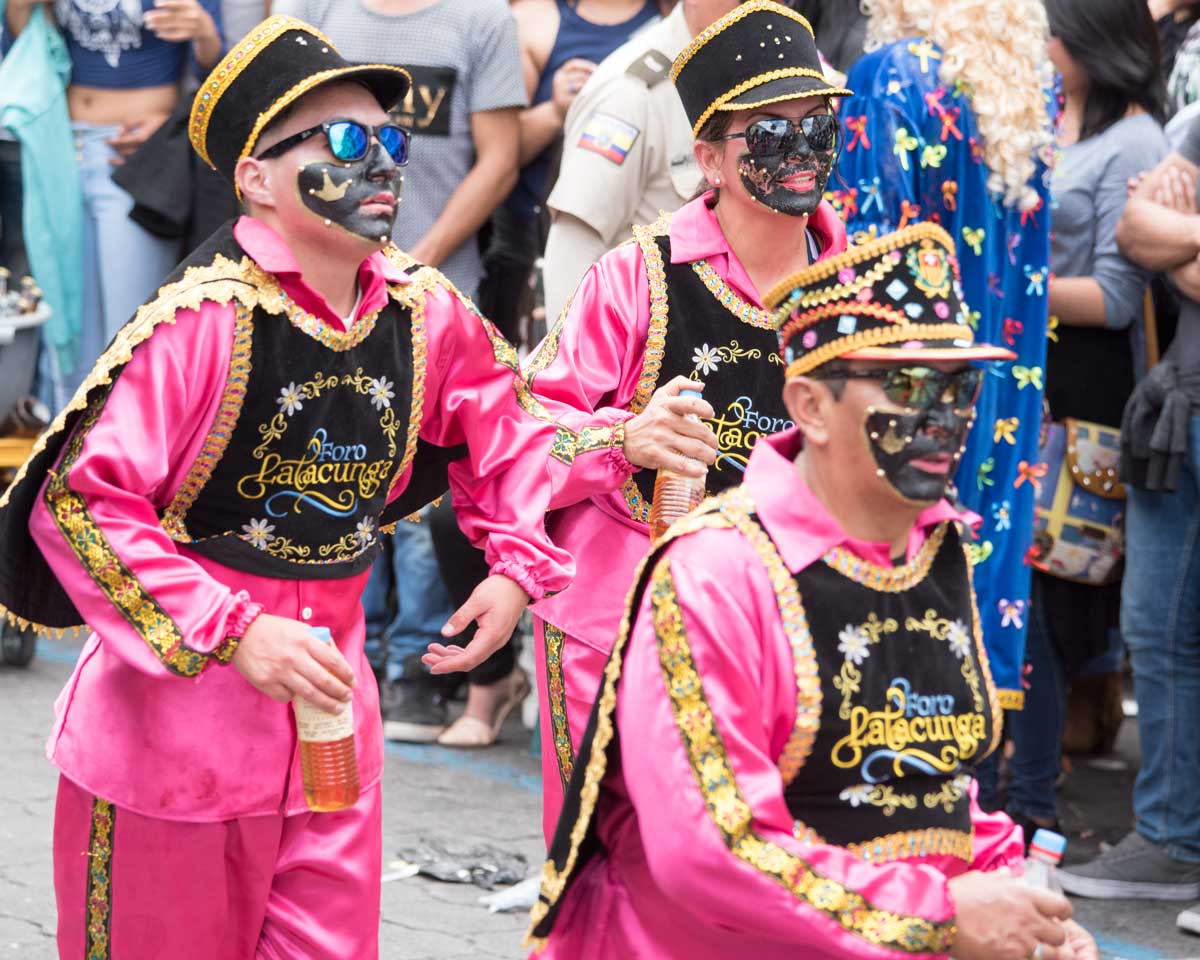
Los Payasos
Los Payasos cover their faces with bright white, hand-carved and hand-painted masks. Local artists from surrounding communities like Pujili, make these clown-like masks by carving local hardwoods into simple faces and painting them with striking facial details. The clothing of El Payaso is always two different colors, split left to right. He can be found carrying a flag of either Ecuador or of city of Latacunga.
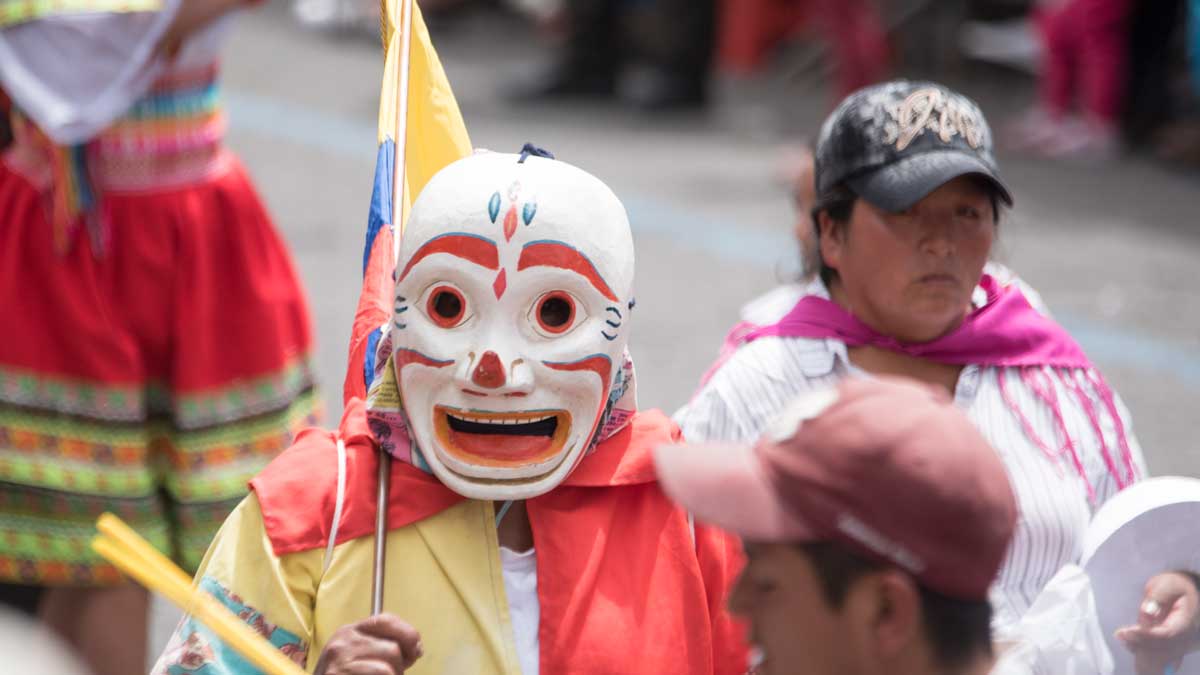
Los Huacos
Los Huacos accompany each of the different groups marching in the parade. They represent shamans and healers of indigenous origins. Always dressed in white, with striped white, yellow, blue, and red painted faces, and a carapace on their backs, they choose people from the crowd to cleanse both body and spirit. The purification consists of Los Huacos chanting and dancing around the chosen person while one Huaco sprays a shot of aguardiente from his mouth onto the blessed person and others tap with sticks or branches of herbs. The cleansing is meant to prevent sickness that often comes with the rainy season. If you are chosen from the crowd, it is only polite to pay a small fee for this cleansing.
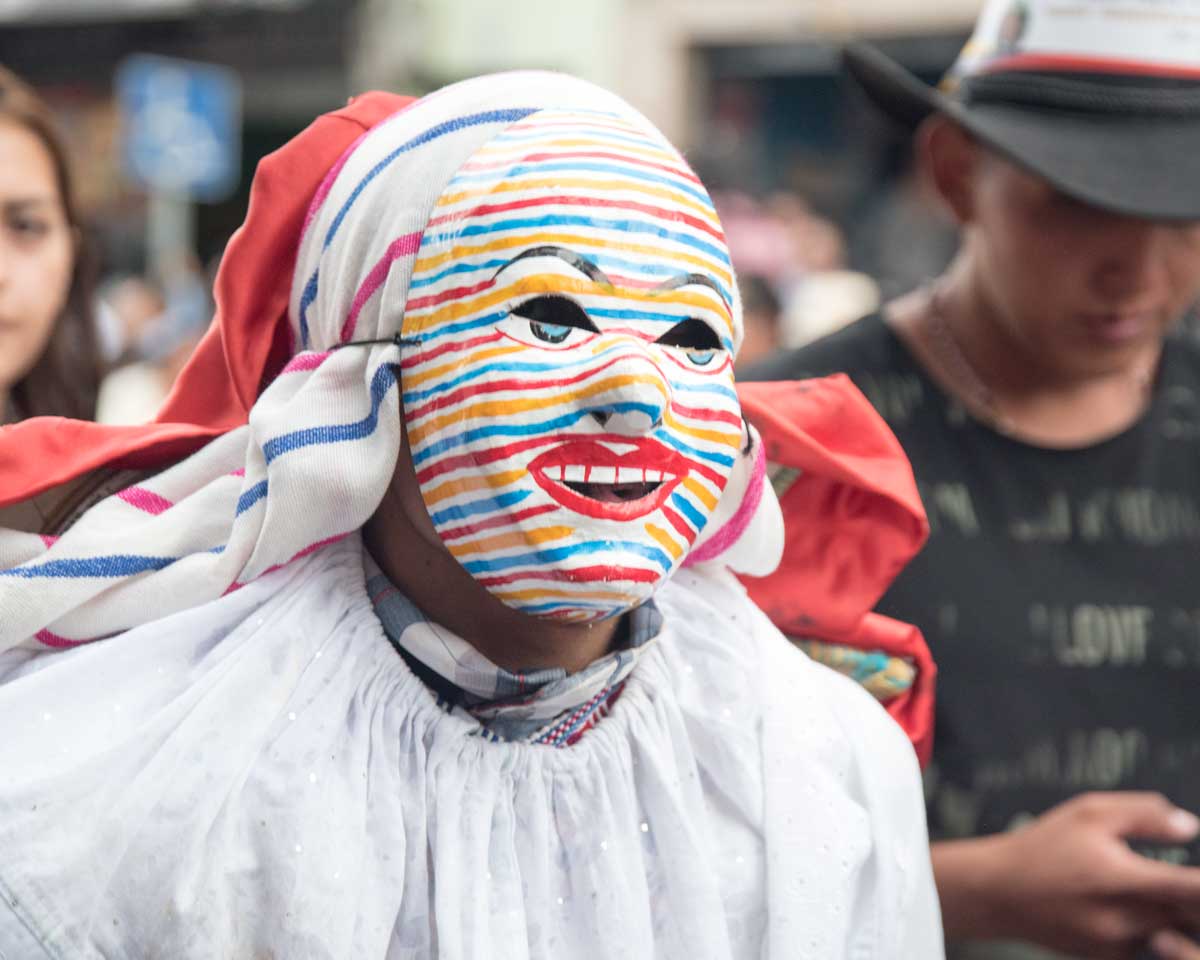
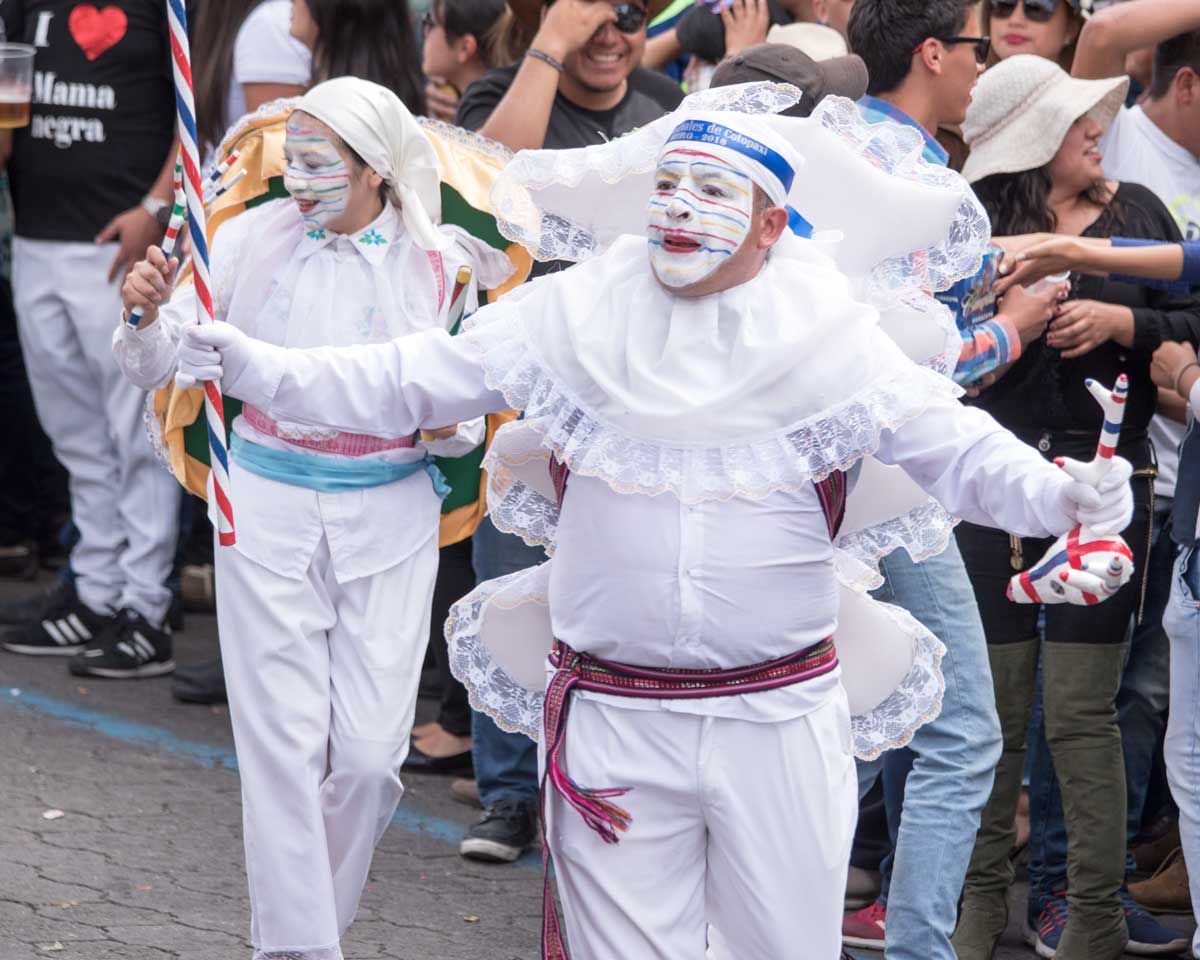

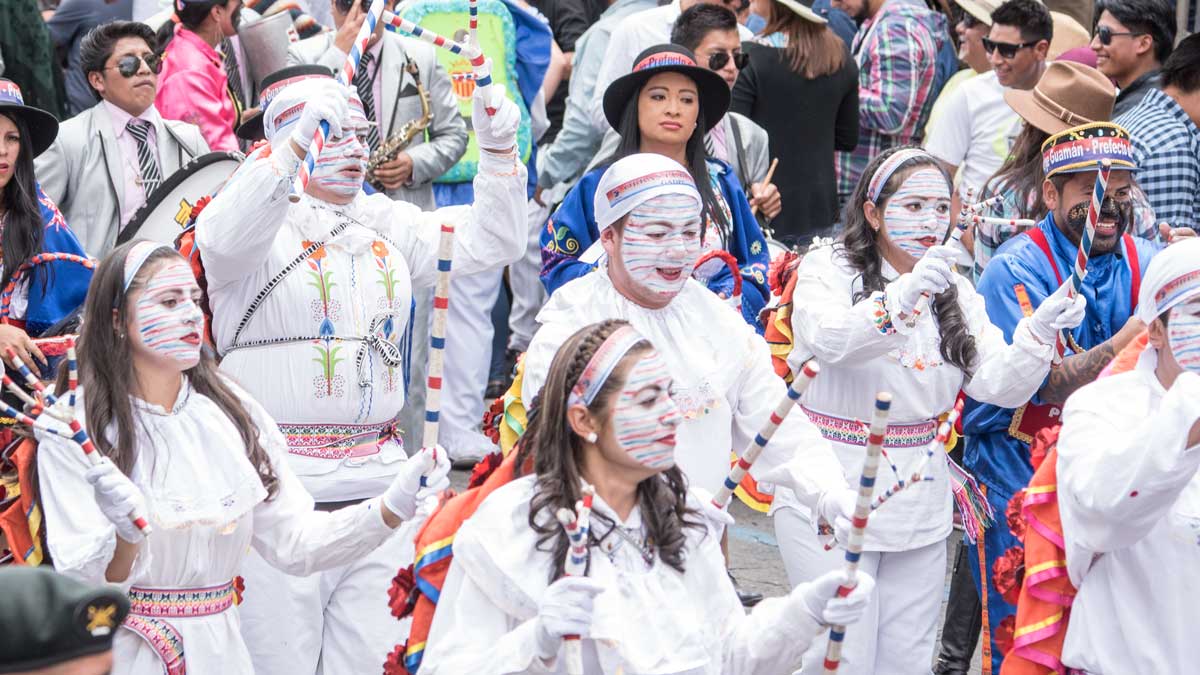
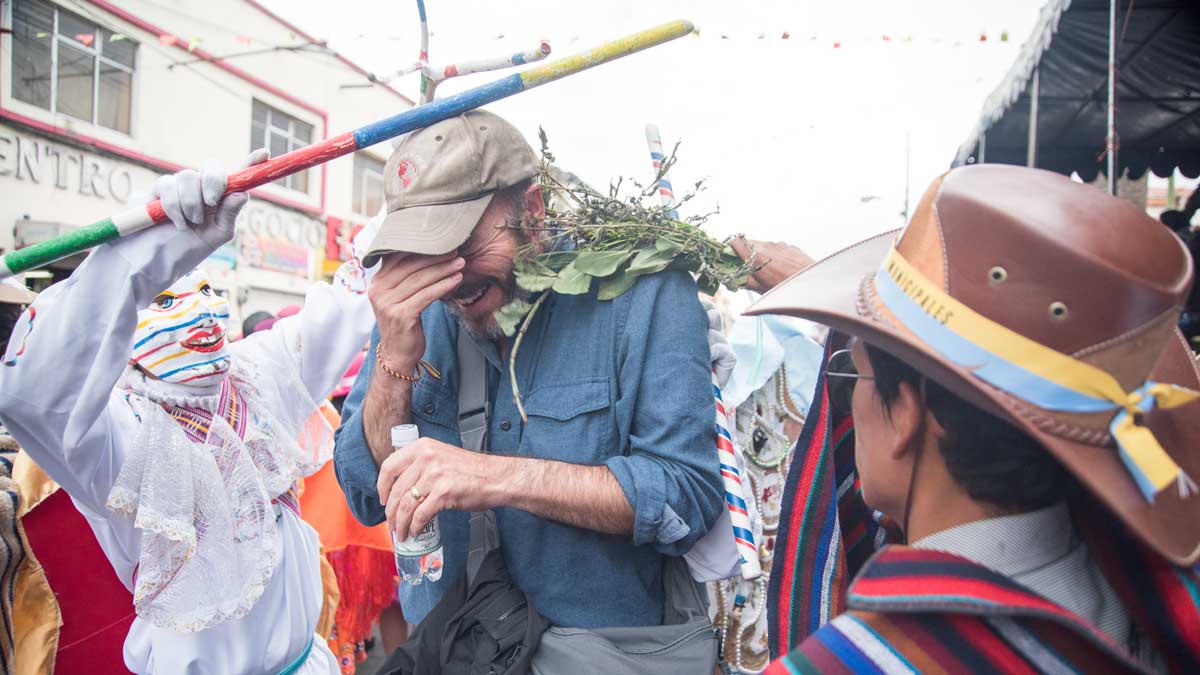
Los Curiquingues (The Caracaras)
Los Curiquingues represent a distinctive Andean raptor, the Carunculated Caracara. These characters wear white, fluffy cones on their heads, white wings, and brightly patterned shirts in the colors of a child’s crayon box. Male Curiquingues sport a plume atop their cones. Never seen alone, these characters flock together amidst the dancers.
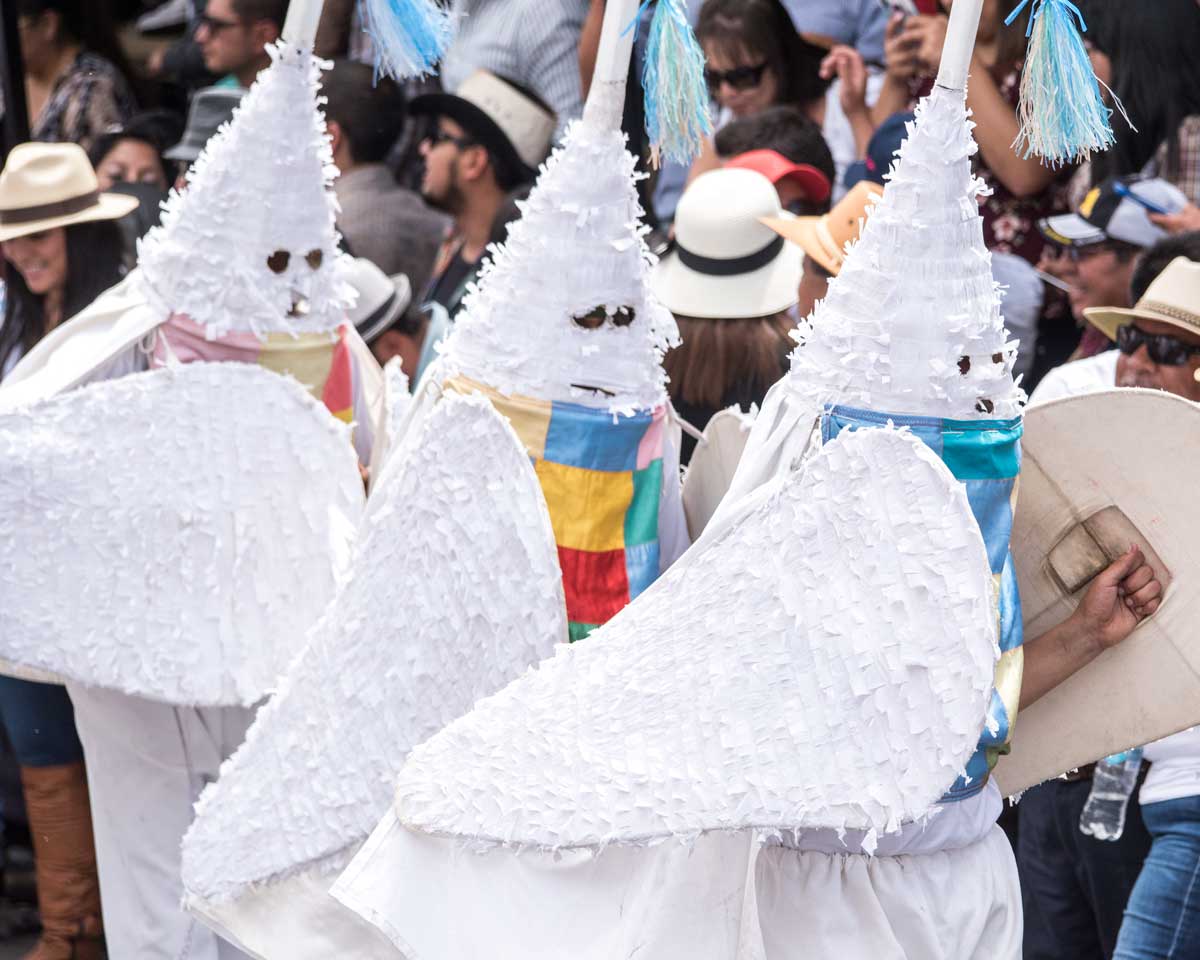
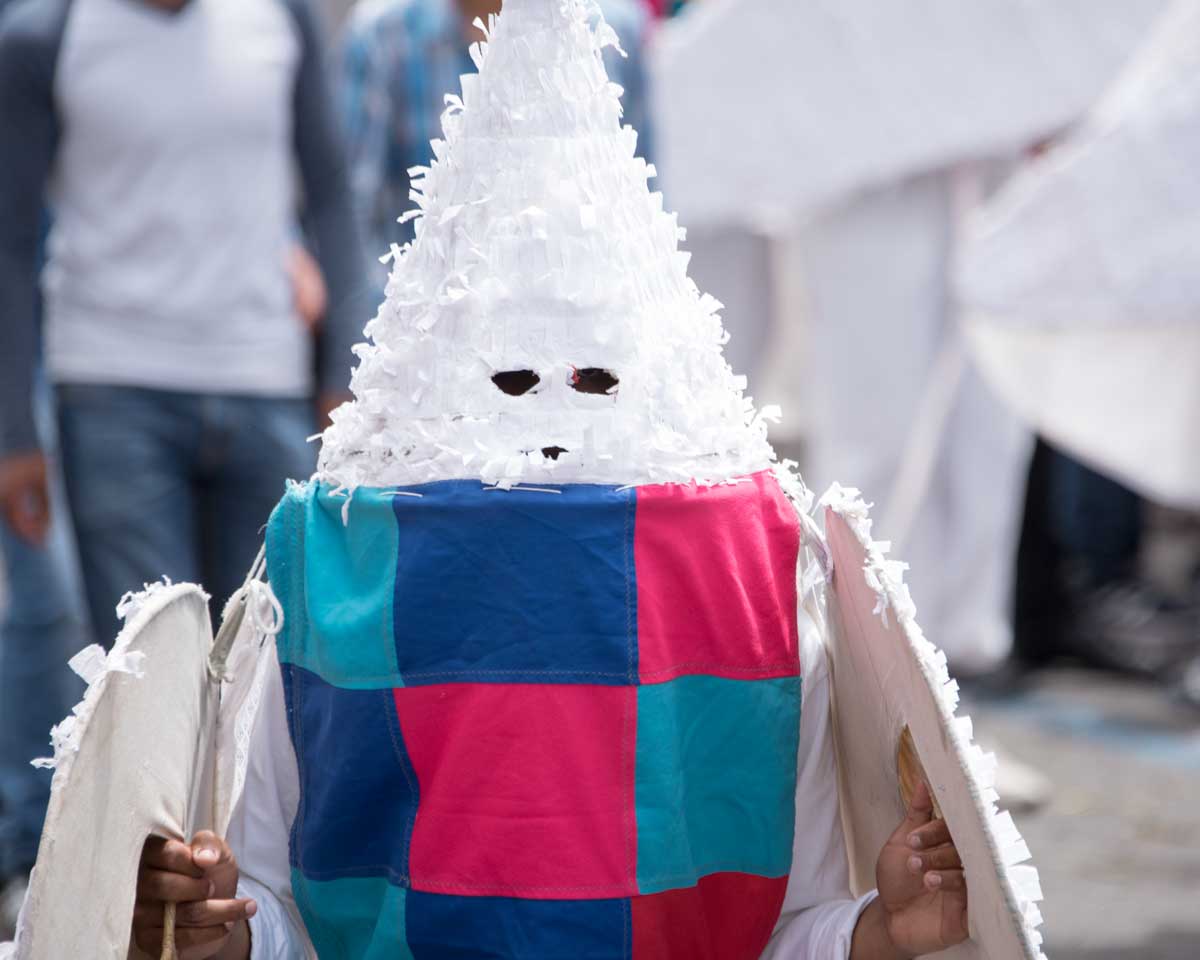

Los Caparichis
Los Caparichis represent the blue-collar workers of Latacunga. These characters wear apple red ponchos made of sheep’s wool, a simple white hat, white pants, and a traditional mesh mask painted with a simple face of a white man with bright pink cheeks and a tiny black mustache. They carry brooms and sweep the parade route clean.
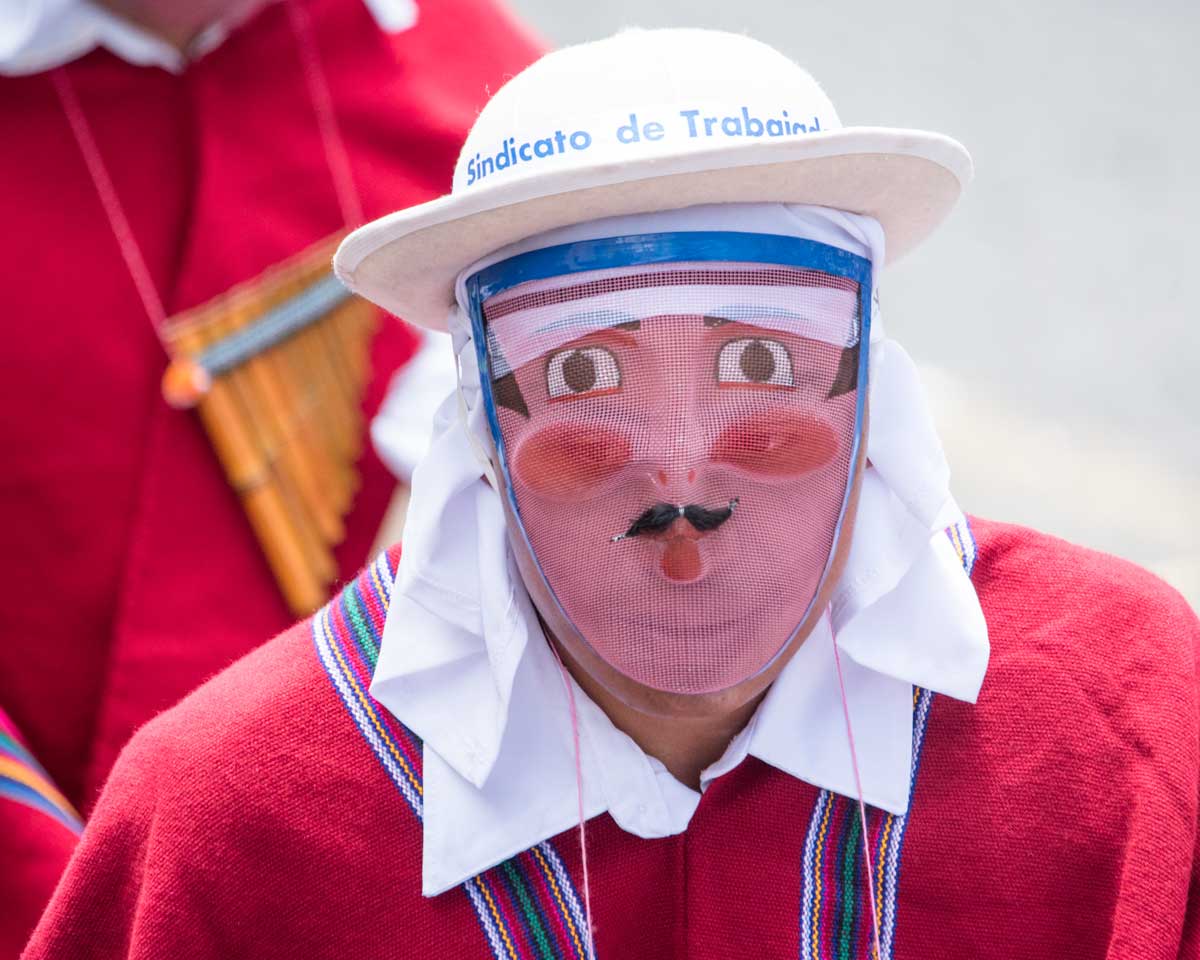
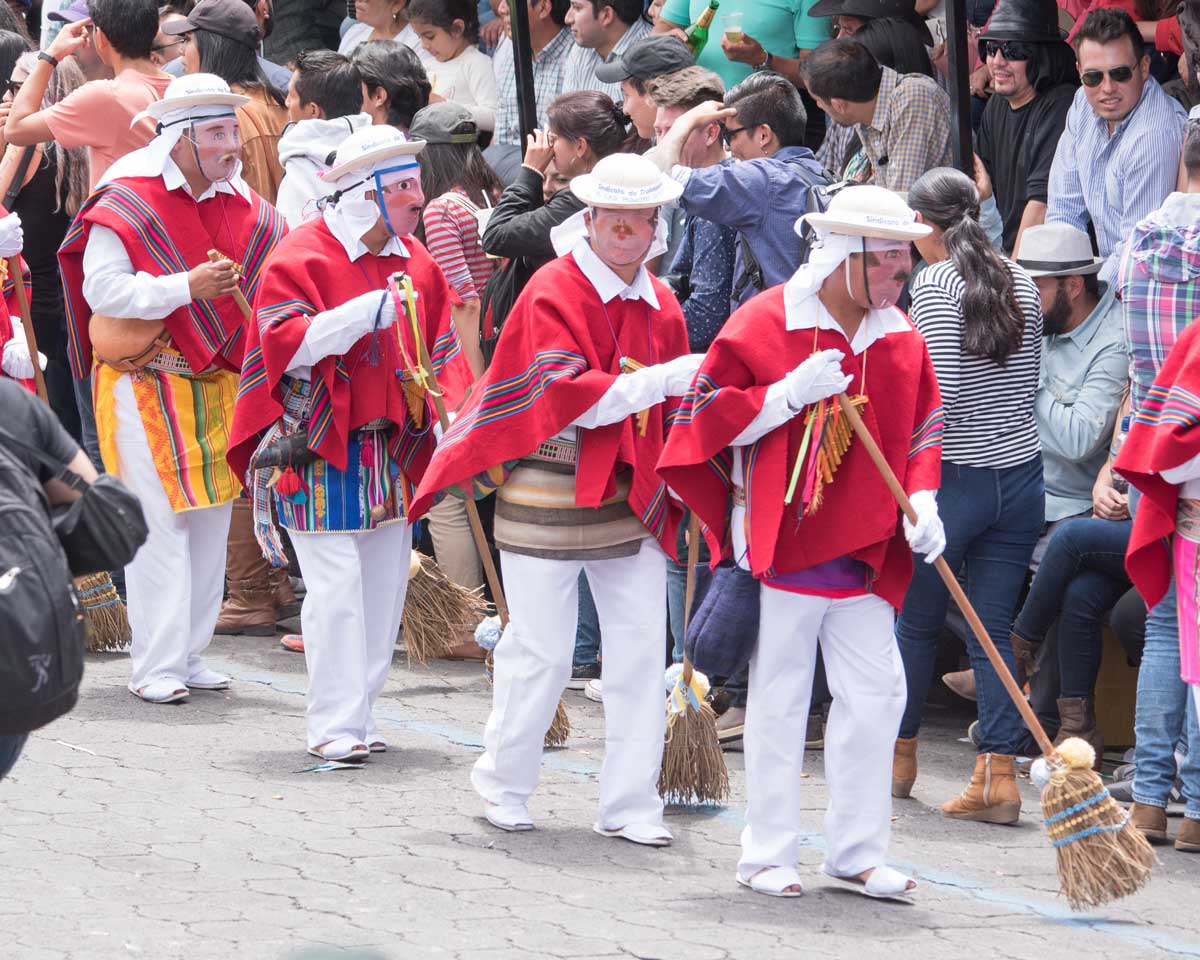
El Ashanguero
Only the strongest of men can be El Ashunguero, also called an Abanderado. They carry a huge basket, El Agrado, filled with everything needed for the party to follow. El Prioste provides the ingredients including fruit, bread, chickens, guinea pigs, rabbits, and usually an entire roasted pig. Baskets often include bottles of whisky or other favorite brands of hard liquor and cigarettes. El Ashunguero is accompanied by at least two other men who often take turns carrying this incredibly heavy load. These characters used to be called Taitas Negros, or the Black Fathers, the symbolic husbands of the Mama Negra. For this reason, some Ashungueros where the half black mask.
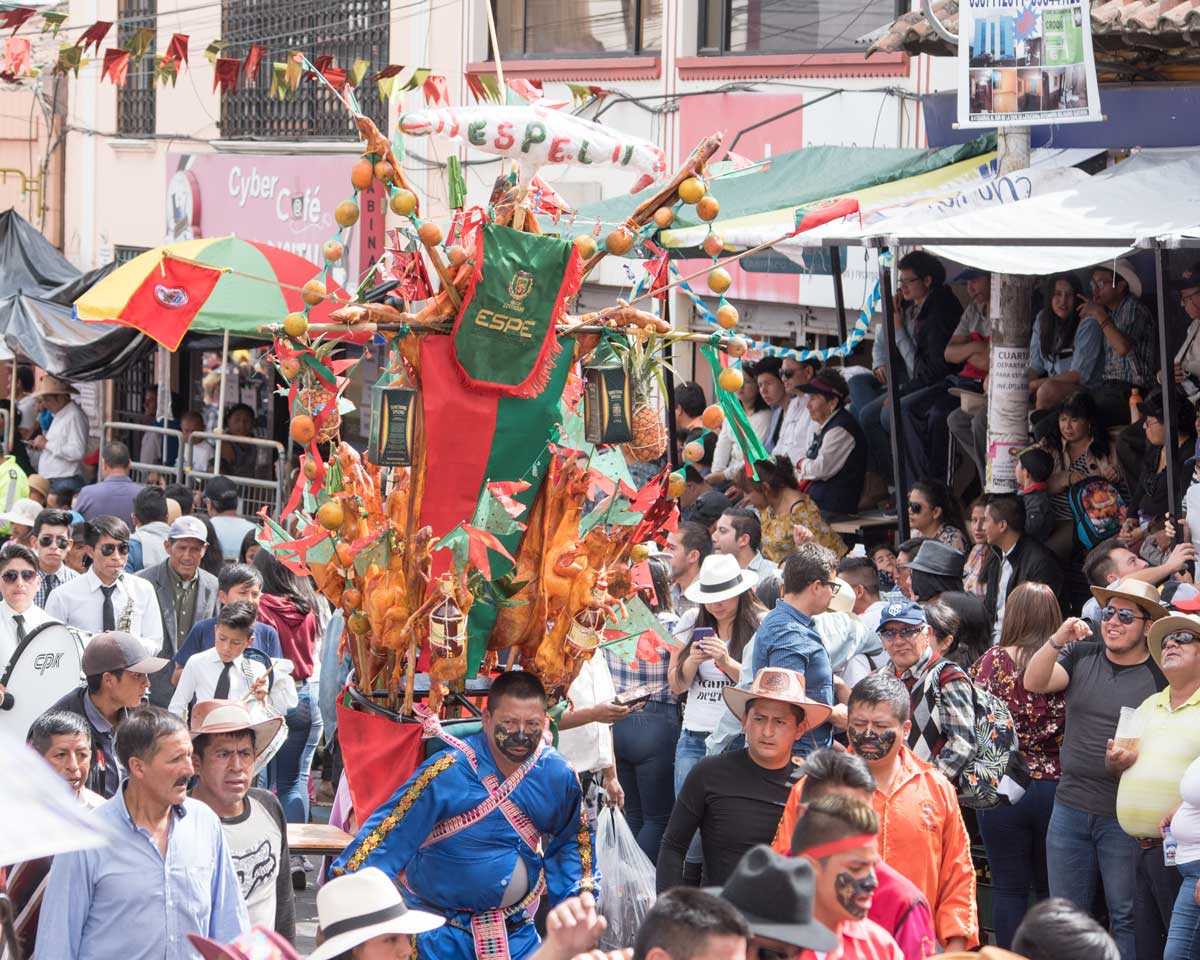
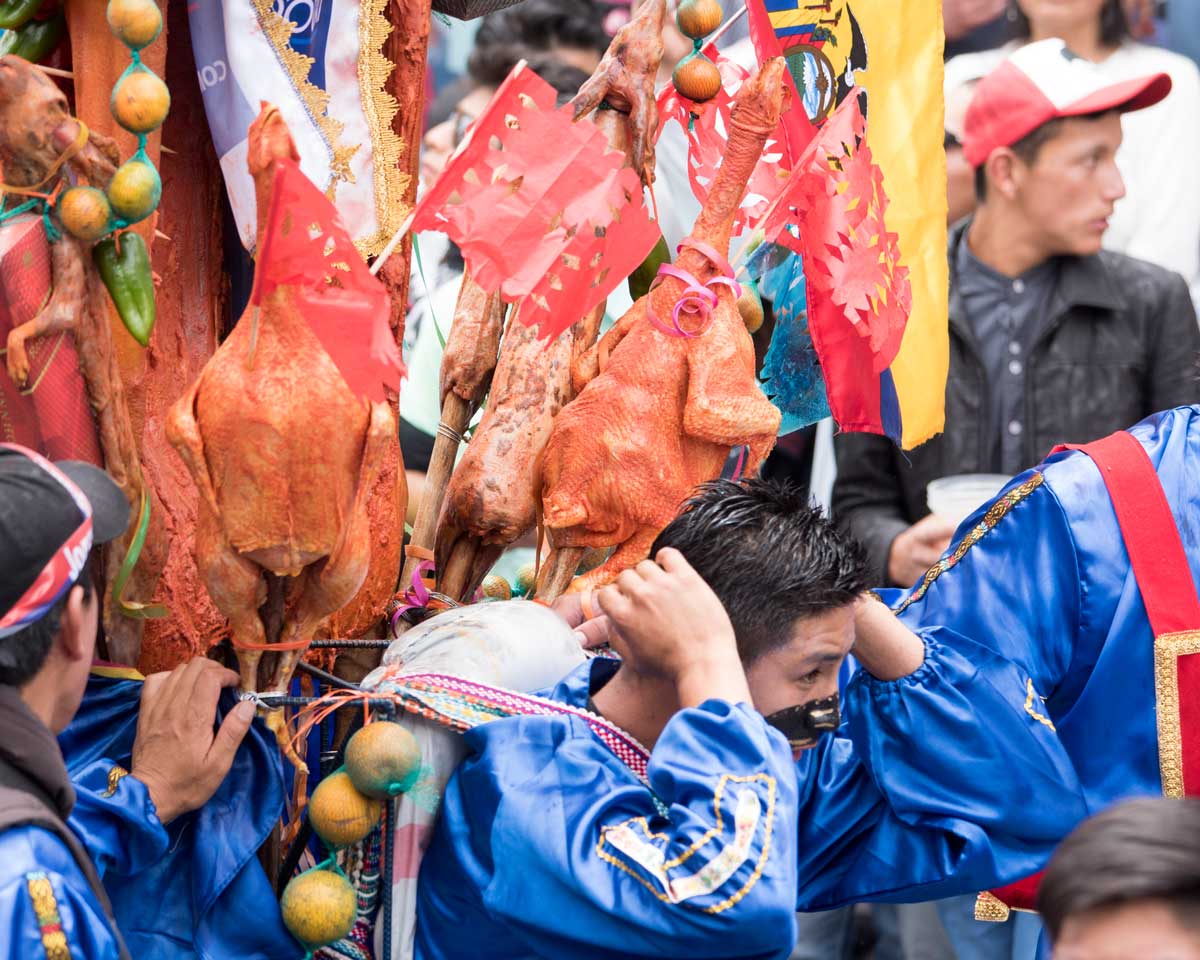
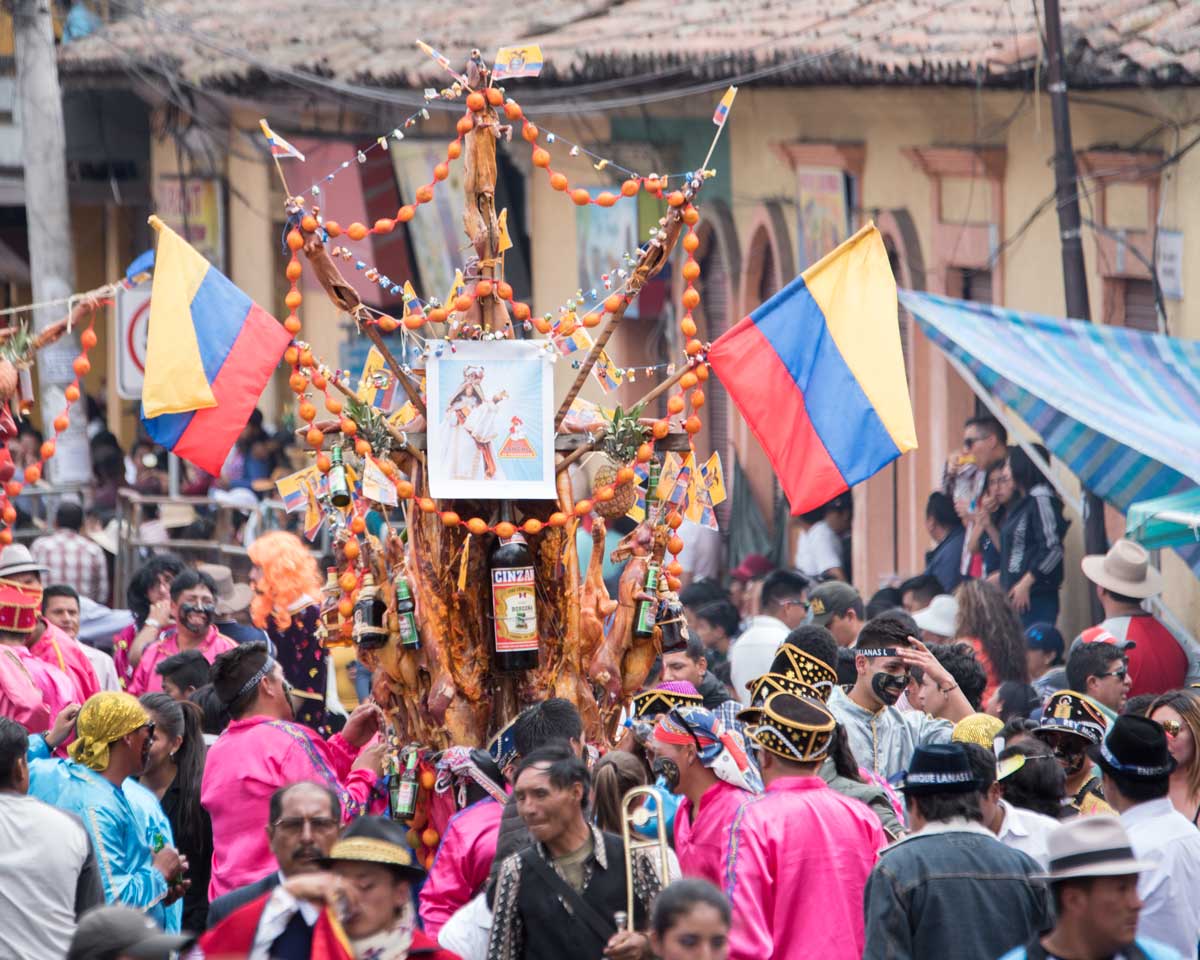

Sources For This Article
Special thanks to our friends Miguel Rueda and Gloria Duque for sharing this experience with us!
We used many Spanish language sources, as well as conversations with locals at the parade, to pull together this article:
- http://www.mamanegra.com.ec/
- https://es.wikipedia.org/wiki/Mama_Negra
Like These Photos?
Check out our other photo essays:
Cuyabeno Wildlife Reserve
An Amazon Reserve in Northeast Ecuador
Mama Negra
Supporting Characters of Mama Negra
Mama Negra
Main Characters of Mama Negra
Flowering Guayacanes
First Rains Bring Beautiful Flowers in Zapotillo

